
































































































For some Whistlerites, van life is a romantic ideal fuelled by social media; for others, it’s a necessity to stay in paradise. - By Róisín
CullenAfter a near-death experience that saw him tumble hundreds of feet down Wedge Mountain, a backcountry skier reflects on where it all went wrong.
16 HOME
The Whistler Museum has officially inked a land-transfer agreement with the RMOW, paving the way for its new two-storey building in Florence Petersen Park.
17 HEALTHY
The BC Electoral Boundaries Commission has recommended trimming a significant chunk of West Vancouver from the Sea to Sky’s provincial riding.
Researchers say more investigation is needed to accurately assess the volcanic risk posed by Mount Meager, Mount Garibaldi and the rest of the Garibaldi Volcanic Belt.
Whistler biathletes shined at the National Championships, with Hanne Stadnyk, Lucas Smith, Graham Benson and Mia Rodger all reaching the podium multiple times in Quebec.

Two Dontas(es?), One Proctor and a gorilla suit take the 72-Hour Filmmaker Showdown win.

COVER If one more hot couple in a white box tries to teach me how to install the wrong insulation and solar power I think I might barf. Long live brown bags and rusty buckets! - By Jon Parris // @jon.parris.art









































































Founding Publishers KATHY & BOB BARNETT
Publisher SARAH STROTHER - sstrother@wplpmedia.com
Editor BRADEN DUPUIS - bdupuis@piquenewsmagazine.com
Sales Manager SUSAN HUTCHINSON - shutchinson@wplpmedia.com
Production Manager AMIR SHAHRESTANI - ashahrestani@wplpmedia.com
Art Director JON PARRIS - jparris@wplpmedia.com
Advertising Representatives
TESSA SWEENEY - tsweeney@wplpmedia.com
GEORGIA BUTLER - gbutler@wplpmedia.com
Digital/Sales Coordinator SHANNON CALDWELL - scaldwell@wplpmedia.com
Production production@piquenewsmagazine.com
Features Editor BRANDON BARRETT - bbarrett@piquenewsmagazine.com
Arts Editor ALYSSA NOEL - arts@piquenewsmagazine.com
Social Media Editor MEGAN LALONDE - mlalonde@piquenewsmagazine.com
Reporters
BRANDON BARRETT - bbarrett@piquenewsmagazine.com
MEGAN LALONDE - mlalonde@piquenewsmagazine.com
ALYSSA NOEL arts@piquenewsmagazine.com
ROBERT WISLA - rwisla@piquenewsmagazine.com
DAVID SONG - sports@piquenewsmagazine.com
Classifieds and Reception mail@piquenewsmagazine.com



Office and Accounts Manager HEIDI RODE - hrode@wplpmedia.com
Contributors G.D. MAXWELL, GLENDA BARTOSH, LESLIE ANTHONY, ANDREW MITCHELL, ALISON TAYLOR, VINCE SHULEY

President, Whistler Publishing LP
SARAH STROTHER - sstrother@wplpmedia.com
08 OPENING REMARKS As the RMOW looks to revamp its public engagement, Brandon Barrett argues that true engagement means wading into difficult conversations—something Whistler used to do more of.
10 LETTERS TO THE EDITOR A letter writer argues that a severe injury on Whistler Mountain could have been avoided, while another wonders if skiers and boarders should be separated from the same runs.
13 PIQUE’N YER INTEREST Although skiing is an individual sport, getting home safely at the end of the day means constant communication and trust in your backcountry partners, writes Megan Lalonde.
54 MAXED OUT With a dream and a vision, Whistler founding father Garry Watson, who died last week at 89, played an instrumental role in what the resort would become, writes G.D. Maxwell.
24 THE OUTSIDER Vince Shuley takes Taiga Motors’ fully electric snowmobile, The Nomad, for a spin, and found it offers few compromises for trail and utility applications.
30 FORK IN THE ROAD Glenda Bartosh plants a seed for Earth Day and Whistler’s 32nd annual Pitch-In Day.

36 MUSEUM MUSINGS Even by the resort’s usual raucous standards, Whistler Blackcomb’s seasonending staff party in 1986 was one for the history books.
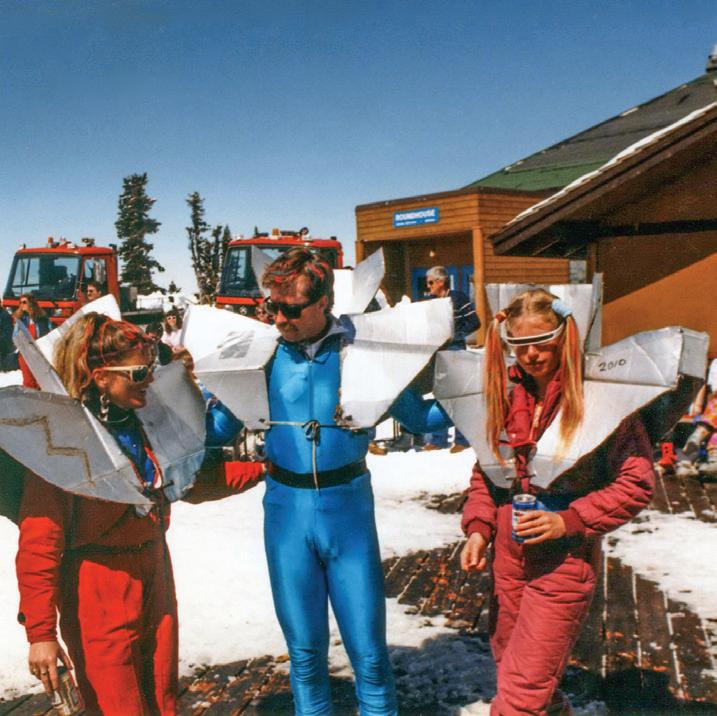
or reject any contribution. Letters reflect the opinion of the writer and not that of Pique Newsmagazine
Pique Newsmagazine is a member of the National Newsmedia Council, which is an independent organization established to deal with acceptable journalistic practices and ethical behaviour. If you have concerns about editorial content, please contact (edit@ piquenewsmagazine.com). If you are not satisfied with the response and wish to file a formal complaint, visit the web site at mediacouncil. ca or call toll-free 1-844-877-1163 for additional information.
This organization replaces the BC Press council (and any mention of it).
ISSN #1206-2022
Subscriptions: $76.70/yr. within Canada, $136.60/yr. courier within Canada. $605.80/ yr. courier to USA. GST included. GST Reg. #R139517908. Canadian Publications Mail Product Sales Agreement #40016549.

















THERE’S BEEN A LOT of talk surrounding public engagement in Whistler of late, and for good reason.
Between the incoming Northlands project, one of the most significant local developments in recent history; the Resort Municipality of Whistler’s (RMOW) controversial plans to upgrade Rainbow Park and its associated, months-long closure; a
 BY BRANDON BARRETT
BY BRANDON BARRETT
pair of hastily organized council meetings that led to elected officials jettisoning the usual parking requirements that would have been attached to Whistler Blackcomb’s Fitz Express replacement in lieu of $200,000, paid annually, until pay parking is introduced on Vail Resorts-owned lots; as well as the RMOW’s recent creation of an entire new department dedicated to community engagement and cultural services, it’s been a hot-button issue in a town that loves their buttons on the scorching side.

As Andrew Mitchell so aptly put it in a column last week (“No control,” Pique, April 7), giving input into decision-making in a tourism town not exactly set up to accommodate locals’ interests can sometimes feel like a frustrating, if not futile, endeavour.
“We can answer surveys, go to open house planning meetings, share our opinions on social media, write letters to the editor, and generally be rabble-rousers when we need to be—and sometimes those things pay off,” he wrote. “But I would argue that we shouldn’t have to go nuclear to defend our interests all the time.”
There’s a debate to be had on whether Whistlerites would even have to go nuclear as much as we do if a larger portion of the electorate (and non-eligible voters, for that matter) was better attuned to the day-to-day
political goings-on around town. If you’ve read the opinion pages of Pique for any length of time, you’ve probably read one columnist or another (myself included) lament the fact that, with a few notable exceptions, Whistlerites tend to be fairly disengaged in local government until a project that personally affects them—read: pisses them off—slaps them in the face. The dismal attendance at most council meetings is proof of that, as well as the equally dismal voter turnout we’ve seen in local elections during the last decade-plus.
This could, of course, be a chicken-orthe-egg situation: I can understand feeling a certain political apathy if you’re convinced your input doesn’t really matter in the long run, and given the handful of recent decisions at municipal hall I’ve mentioned above that local officials either knew, or ought to have known, would ruffle feathers in the community, there does appear to be a certain disconnect between the RMOW and the wider public that would benefit from a deeper understanding on both sides.
So, what gives? On paper at least, there
was required baked into it, a recognition on the RMOW’s part of the project’s outsized importance. And yet, despite a tidal wave of support to maintain the Whistler Racket Club where it is, it feels like a fait accompli at this point that the club will be relocated from Northlands. Wherever you stand on that debate—and we here at Pique firmly believe housing and health-care should trump a racket facility on that last piece of prime development land—there’s no denying that, to certain, significant segments of the community, it is yet another example of the public’s wishes going largely unheeded.
The RMOW now looks to revamp its own public engagement efforts, recently hiring former Squamish Mayor Karen Elliott as the new department’s GM, and committing to a wholesale review of its select council committees to ensure members—which commonly include resort stakeholders and local residents—“feel valued for their contribution and are able to clearly see where their feedback has been captured and considered in the municipality’s work,”
seen a tightening of the screws when it comes to public messaging.
As a local long-timer and municipal committee member recently told me, in Whistler’s not-so-distant past, it wasn’t unusual for the RMOW to host community forums that could last for hours at a time, with residents, visitors and municipal staff duking it out, philosophically speaking, on the future of our little resort town.

Those often-heated debates may not always have translated directly into policy change, but they did provide the sense to locals that they were being heard and valued, which, in my experience as a reporter, is usually the most important element of community engagement.
Investigative journalist and author Amanda Ripley, who has spent her career covering crime, disaster and terrorism, speaks eloquently about the value of “good conflict,” the kind that involves a deeper listening and leaves both sides with a greater understanding of the other.
““When people feel heard, they act differently,” Ripley told The GSX Daily in




are inarguably more opportunities than ever to provide feedback into municipal decisionmaking, with online surveys, digital open houses, and livestreamed council meetings making it so you don’t even have to change out of your PJs if you don’t want to. Mayor Jack Crompton famously gives out his personal phone number to anyone who wants it. The aforementioned Northlands project had an extra layer of public engagement than
according to a recent report.
I think one important way the RMOW can help both its committee members and the wider community’s input feel valued is to facilitate the kinds of tough-but-meaningful conversations that Whistler seemed to have more of years ago. As we all know, nowadays, Whistler is big business, and with those many monied interests has been a certain corporatization at municipal hall that has
2021. “They say less extreme things afterward ... and they open up to information they maybe didn’t want to hear. So, think about how that’s going to change everything else that happens afterward.”
Engagement can’t be mere lip service. It needs to be authentic and meaningful, and sometimes, that requires us to wade into the muck, even if it risks muddying Whistler’s corporate sheen. ■

“When people feel heard, they act differently. They say less extreme things afterward ... and they open up to information they maybe didn’t want to hear. So, think about how that’s going to change everything else that happens afterward.”
- AMANDA RIPLEY
NOW
PRICED FROM $ 1,068,000
Nestled between Whistler and Vancouver in beautiful Squamish, this striking collection of three bedroom townhomes is designed for those who love spending time in nature. Plus, most homes have the convenience of a side-by-side double car garage for storing all your adventure gear.



OPEN 12 - 6 PM DAILY
(except Fridays)
2060 Dowad Drive, Squamish highline@polyhomes.com
604.757.5550 polyhomes.com
3 BEDROOM TOWNHOMES IN SQUAMISH SELLING / VISIT TODAY
This letter has been brewing for a while. It is the result of six years of Vail Resorts ownership; the letter by Jim Pipe (“Will Someone with authority at Vail Resorts please stand up?” Pique, Feb. 9); the letter by Gordon Lake (“Whistler Blackcomb needs Canadian ownership” Pique, Feb. 24); the letter by Patrick Smyth (Vail Resorts hate is getting boring” Pique, Feb. 24); a comment by a good friend that people complain about Vail but don’t do anything; and a significant incident I experienced on Whistler on Jan. 18 of this year.
I was skiing Whistler Mountain on that date. At approximately 11:30 a.m., just underneath the very top of the Emerald Chair, I came across a skier face down in the snow and in some distress. I made the traditional call, “Do you need some help?” and was shockingly greeted by a woman who screamed up at me, “My femur is broken! I’ve just broken my femur!” I’m a former Whistler volunteer ski patroller with a long-since lapsed industrial first-aid basic-course accreditation. What remained of my training kicked in. Over the next 60 minutes or so, I held her femur in traction while the doctor and six patrollers administered to her needs. She was transported down the mountain via helicopter. The patrollers and doctor performed flawlessly and gave this person the
best on-mountain care I could imagine. Though it was a traumatic experience for me, it was nothing compared to the trauma she experienced.
I took pictures and video of the accident scene because it seemed unusual to me. It was right at the top of the Emerald Chair with an unmarked five- or six-foot drop with poor visibility. She skied right off the edge and injured her leg. The incident made me question what safety supervision was in place, as well as an apparent lack of safety ropes in such a busy beginner area. In my experience, this safety
oversight would normally have been carried out by the now virtually non-existent, yellowjacketed mountain safety volunteers. Keep in mind this injured skier was not a beginner but rather an 80-year-old veteran skier.
I have lived in WhistIer for almost 49 years and have been skiing for 62. I know what mountain safety should look like. I believe this serious injury could have been avoided, and would have been avoided, if it was not for the culture of costcutting and service reduction that seems to be the philosophy of the present ownership.
Back to the letters and comment by my friend. Lake’s letter calls for a much-needed change of ownership. I agree. Pipe’s letter encapsulated nicely the broad strokes of complaints and consistent lack of meaningful responses from Vail. If they do respond, it’s been my experience that they pay lip service only to their “Epic” customer experience, provide a few platitudes, and then act almost solely in the interest of the bottom line. Smyth’s letter pays homage to that bottom line. It’s a cynical and dismissive note that mocks skiers’ concerns. He states that, “the lack of this and the lack of that is kind of getting boring.” “Stop complaining . . . buy shares in Vail.” Well boring it may be to you and Vail, but Vail’s ownership has consequences. In this case, the consequence was a traumatic event that could have irreparably altered a life. To the comment my good friend made that everyone complains but no one does anything . . . this letter is the best I can do right now. Perhaps I can do more if asked to be a witness in court.
Paul O’Mara // Whistler



[Editor’s note: In response to the above letter, a representative for Whistler Blackcomb provided the following statement: “We take great pride in our Mountain Operations and Patrol team members and stand behind their exceptional work on our mountains. We also place the utmost value on safety, as it has always been—and remains—our top priority. We are committed to ensuring all Whistler Blackcomb
in Squamish pre-sale opportunities. Get in touch for information about upcoming projects.
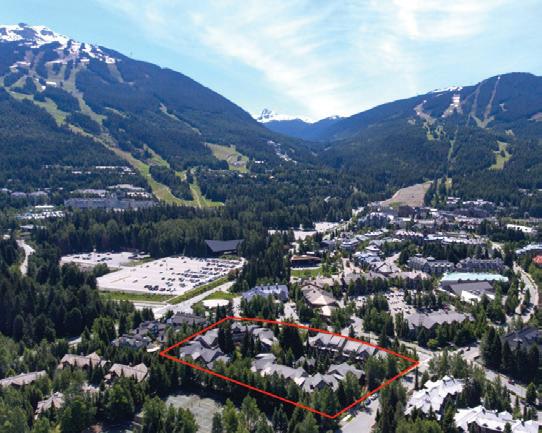
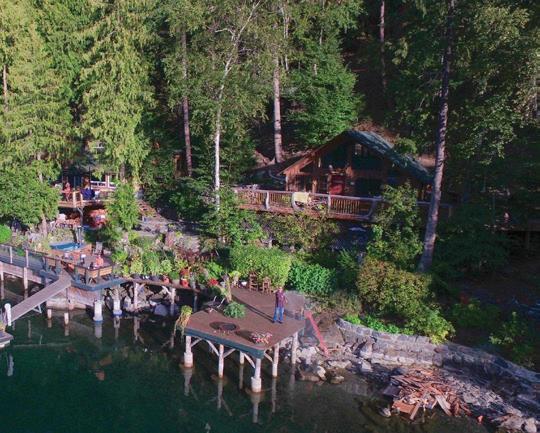

Short description of property listing - no more than 30 words. Git, tem am ea sant omnis alitio de sa es quis maios eate dolupti quid quatumendus, ut excerferiae ommostori cum quaecep tatibus.
2 BED I 2 BATH I 859 SQFT Whistler Creekside

1 BED I 1 BATH I 537 SQFT Whistler Upper Village
Short description of property listing - no more than 30 words. Git, tem am ea sant omnis alitio de sa es quis maios eate dolupti quid quatumendus, ut excerferiae ommostori cum quaecep tatibus.
Short description of property listing - no more than 30 words. Git, tem am ea sant omnis alitio de sa es quis maios eate dolupti quid quatumendus, ut excerferiae ommostori cum quaecep tatibus.
Village
Short description of property listing - no more than 30 words. Git, tem am ea sant omnis alitio de sa es quis maios eate dolupti quid quatumendus, ut excerferiae ommostori cum quaecep tatibus.

employees have proper ongoing training and that appropriate safety measures are in place and taken seriously every day, by every single person across the whole of our resort team.”]




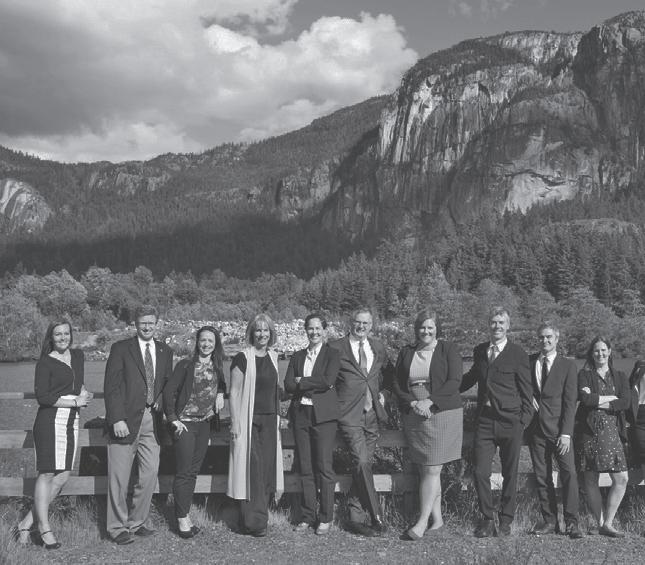




Congrats [Andrew Mitchell] on your current column (“No control,” Pique, April 7). It is so rare for a Whistler journalist other than Max to speak up with a sharp, critical voice. I believe your piece to be completely on point.



I’m so frustrated with this council of incumbents. [Editor’s note: Whistler’s mayor and council is made up of five incumbents and two first-time councillors.] I wonder who they represent; it certainly is not the local residents. The manner in which they are, in turn, bent over by Vail Resorts and the province indicates either ineptness, a lack of cojones, or conflicted loyalties. Thanks for speaking up.
Alan Sailer // Whistler



I was recently in Whistler for a fabulous day of skiing. It was a bluebird day, mid-week, with nicely groomed cruiser runs awaiting us all across Whistler’s wonderful ski terrain. It was a visit to the great mountain that was much enjoyed by everyone. Our fabulous day, however, was narrowly taken away by two out-of-control snowboarders that came out of the trees down West Bowl, taking out one of our group as they collided. They were two young boarders from away, crossing the trail into out-of-bounds territory. We, a group of five, were all skiing down towards the Red Chair as we came down from Far West Bowl when the first came out from above and crashed on the trail about 10 metres in front of me, and then a second one further ahead who folded up an older gentleman and family friend that has had numerous surgeries in order to continue skiing and living his active lifestyle.
It brings up the question I have often had: Should we separate skiers and boarders
AS OF TUESDAY, APR. 11
Put your sunny, spring-skiing dreams on hold and get ready for another winter storm. A significant wintry storm is expected to impact the South Coast this weekend. The storm will bring the typical trifecta of strong winds, heavy precipitation, and fluctuating freezing levels.
With a big storm comes a big step back from avalanche terrain. While the new snow may provide decent powder skiing at higher elevations, it can quickly turn into heavy, dense storm slabs that create challenging skiing conditions and potentially dangerous avalanche conditions. However, the silver lining is that storm-slab instabilities that form during relatively warm periods settle and bond
faster than they do in cold temperatures.
But don’t rush out into big terrain! New snow requires time to settle and stabilize. Human-triggered avalanches are still possible in the days after the storm. Short periods of avalanche activity typically occur at the end of a storm during periods of warm, sunny weather. Additionally, recent storms have built up large and fragile cornices, so be sure to give overhead hazards a healthy respect, especially during periods of strong sun.
As always, check the latest forecast at avalanche.ca to stay up to date on how the snowpack and avalanche problems are developing. Remember to be patient and stay safe—spring skiing is on its way. ■
CONDITIONS MAY VARY AND CAN CHANGE RAPIDLY Check for the most current conditions before heading out into the backcountry. Daily updates for the areas adjacent to Whistler Blackcomb are available at 604-938-7676, or surf to www.whistlerblackcomb.com/mountaininfo/snow-report#backcountry or go to www.avalanche.ca.

from the same runs? Alternating access to them on odd and even days so that all have a chance to cover the same slopes and runs over two days. Boarders are blind to their backside, while skiers descending a fall line have vision on both sides. My recent visit on the mountain with lighter traffic on-slope left me amazed at the speed at which some people were travelling, with both skiers and boarders at risk of collision. Some probably moving at 70 to 80 kilometres an hour, which, if you hit a person at that speed, will cause serious injuries to both.
I personally don’t mind sharing runs with boarders as an advanced skier, but I am sure many people feel intimidated by boarders with their wider sweeps and their blindside. That would also stand for skiers that want to roll down the mountain at out-of-control speeds, which I just saw too many times on my recent visit to Whistler. Maybe there should also be a designated run for speed skiers, only to keep everyone happy. There are enough runs between Blackcomb and Whistler to provide for all interests.
Some après thoughts, post-fabulous day of skiing in Whistler.
 Brian Wolfgang Becker // North Vancouver
Brian Wolfgang Becker // North Vancouver



First off, I would like to thank the Resort Municipality of Whistler (RMOW) for the snowclearing efforts this year on the Valley Trail. It appears that there was a more concerted effort to clear the Valley Trail, making it easier for non-automobile drivers to travel safely. Thank you.

All winter, we get easier cruising, with yellow gates opened and bollards removed. The most immediate dangers are eliminated so that snowplows can clear the trails, so awesome!
Unfortunately, with spring now upon us, I expect the RMOW to perform its annual ritual of, in my opinion, making cycling more dangerous. Dozens of bollards will be placed in the middle of the trail, yellow gates will be closed—look at all the scratched yellow paint to see how much those gates get in the way.
In a bizarre contortion of logic, in order to protect Valley Trail users from cars, the RMOW makes it more dangerous for cyclists. That’s right, to protect cyclists from cars, we
make it more dangerous for cyclists. Unless I’ve missed something, drivers have not been asked to make a single sacrifice to make active transportation safer.
I know of two injuries last summer from bikers hitting bollards. BC Cycling Coalition research shows that “Half of all urban biking injuries involve collisions with fixed objects, uneven surfaces, rail tracks, other nonmotorized users and other falls.” So, to make it safer, it is best to eliminate those fixed objects, like we do for the winter months.
I asked municipal staff if we are preventing a problem that doesn’t exist: how many cars have driven down the Valley Trail (a few in many years) and how many accidents does this cause (no record of any)? It’s just what we’ve always done.
There are heaps of research revealing that painted bike icons on the roads makes biking more dangerous, like we’ve been painting annually throughout our village roads, but the RMOW will likely get their stencils out again this spring.
We could try signage, we could try concrete barriers, we could try building gates for cars (a la Rainbow Park) to slow down and drive through. There are so many creative solutions. But this year, I expect we will make it more dangerous, because that’s the ritual we’ve always performed.
Brendan Ladner // Whistler




The Birken Recreation and Cultural Society (BRCS) would like to thank Kama Mac-Grenzer; Lori Coates; Nico Ciarniello; Jackie and Gary Whitlock; Desiree Cabalfin; Brad Knowles; Jamie St. Germain; and the Teenage Activity Helpers for helping with setting up the Easter Fun event at Gates Lake Park in Birken.

A huge thank you to the SquamishLillooet Regional District; Pemberton Valley Supermarket; Pemberton Valley Hardware and Building Centre; AC Gas; Animal Barn Pet Food and Supplies; and IDA Pemberton for their awesome donations.
The rain and cool temperatures did not keep people from enjoying the afternoon. We will see you next Easter!
Michelle St. Germain, Vice Chair BRCS // Birken n
IN THIS WORLD, there are dog people and there are cat people. Of this, I am convinced. It’s a hill I’m ready to die on.
Sure, you can love your pets equally. Or maybe you’re just not an animal person at all—to each their own. But if you reach deep down, if you’re honest with yourself, I’d be willing to bet you resonate with one species more than another.
BY MEGAN LALONDEI don’t like to put people in boxes, but a fact is a fact.

I’ve always thought team sports and individual sports followed the same pattern. Some people are naturally drawn to one side of the aisle over the other, or just better suited to one dynamic for no definitive reason.
Myself, for example. I grew up playing almost exclusively team sports and can’t remember ever truly caring about my individual results. Tennis was in the mix for a hot sec, but even then, I always liked playing doubles better. Winning never felt bad, obviously, but I was usually more concerned about having fun with my friends than beating opponents. Winning, if it’s just for me, has never been a particularly powerful motivator.
Not pissing off or letting down my teammates? Now that’s a good motivator.
Extend that beyond sports, even: We all know people who work better individually and others who thrive in team settings. One’s not necessarily better than the other, it’s just a different way of operating.
Well, depending on who you ask. A 2019 study published in the Journal of Sports Science & Medicine found athletes who play team sports may be less likely to suffer
of the team-sports camp, I’ve also lived in Whistler for seven years. It’s a town that’s filled, for the most part, with people who have prioritized their individual vision for life over society’s. More than that, it’s a resort that was literally built on individual sports: skiing, snowboarding, biking, even trail running. In any of those activities, passing means getting ahead of someone, not handing something over to your teammate. At their most elite levels, there’s only one person standing

Especially the ones who are just the right amount of better than you, who encourage you to ride faster or tackle more challenging terrain without completely throwing you into the deep end.
But take skiing or snowboarding beyond the boundary rope, and it’s no longer a solo sport. Those friends you’re riding with on a pow day are going to be the ones who notice if you suddenly find yourself stuck in a tree well. In the backcountry, when you’re far from help, having the right teammates can sometimes mean the difference between life, death, or severe injury.
It’s a delicate balance, and a bigger team isn’t always better: research out of Europe has shown the risk of avalanche involvements increases for groups of four or more people.
anxiety or depression than their counterparts competing in individual sports.
The study found 13 per cent of respondents who played individual sports reported experiencing anxiety or depression, compared to seven per cent of team-sport athletes. The report also found individual-sport athletes were motivated to compete for goal-oriented reasons, compared to team-sport athletes that were drawn to the field, court, or ice for fun.
As much as I consider myself a member
on each step of the podium. At their most recreational? The expression “no friends on a pow day” had to start somewhere.
But that hasn’t been my experience. In those seven years, spending time in the mountains has uncovered an entirely new perspective on team dynamics. To me, those “individual sports” have never felt like solo endeavours.
You can go rip a few top-to-bottom laps by yourself, but a day on the mountain is a lot more fun when it’s spent with friends.
In my view, it’s just as much of a team sport as hockey or soccer or volleyball or football. It requires constant communication, making sure everyone is on the same page when it comes to the gameplan, trust in your teammates and their abilities, and the motivation not to let your teammates down. The difference? It’s a team sport where winning doesn’t have to mean scoring more goals, skiing fastest or steepest, recording the most vertical or taking home a trophy. Winning can be as simple as getting home safe after a fun day outdoors, period.
Maybe the line between individual and team sports isn’t so clear, after all. ■


[S]pending time in the mountains has uncovered an entirely new perspective on team dynamics. To me, those “individual sports” have never felt like solo endeavours.
WHISTLER SEARCH AND RESCUE EXTRICATED TAREEF DEDHAR FROM A STEEP SLOPE AFTER HE FELL HUNDREDS OF FEET OFF A CLIFF ON MARCH 17
BY MEGAN LALONDETAREEF DEDHAR is spending the next few weeks lying in a bed on the first floor of his grandmother’s Vancouver home. The 25-yearold Squamish resident isn’t able to walk while he recovers from an open tibia fracture, a broken pelvis, a shattered ankle and a couple of broken ribs, plus some nerve damage to his left wrist.
He’s lucky.
“All things considered, it could have been much worse,” Dedhar said.
Dedhar suffered that laundry list of injuries falling off a cliff face on Wedge Mountain, in the Whistler backcountry, on March 17. According to his tracking watch, Dedhar fell about 150 metres, or nearly 500 feet, at a top speed of about 80 kilometres per hour. That’s roughly the equivalent of falling off a 45-storey building. Doctors estimate it will take between nine months and a year to regain most of his functionality.
The skier found himself above the rock face, attempting to navigate his way into the Northwest Couloir after realizing he and his touring partner, Charles-Antoine Leblanc, had missed the corniced entrance to their

intended line while following a digital map on their way down from the summit.
Tired after a few minutes of retracing their steps uphill and still far from the top of the couloir, the pair spotted what they observed to be a potential entrance to the slope. They knew the sheer terrain to skier’s left was “unskiable,” said Dedhar, but after looking at maps, were confident a hard traverse right
“I was fearing the worst, that he was dead, because I couldn’t see what was after the last point where I saw him,” Leblanc said. “I thought it was probably a cliff, but I didn’t know how big it was.”
Dedhar tumbled for a few seconds before realizing he was airborne. “I thought it was over,” he said. “After what felt like a second or two, I saw that little snow patch where I ended
I do that,” he said. “The process of writing about that … is something I enjoy, and in this case, it was definitely a good way to process the entirety of the events.”
Leblanc and Dedhar had climbed to Wedgemount Lake the night before. They spent the night in the emergency hut, with a plan to set off early enough to avoid skiing sunbaked slopes later in the day.
It was the pair’s second venture into the backcountry together after meeting through the South Coast Touring Facebook group. The week prior, they had climbed Mount Matier, in the Duffey Lake area, in less-than-ideal visibility.
over a couple of small ridges would lead into the couloir and save them the uphill travel.
“I kind of wanted to go back up, but he was pretty confident that he could traverse there,” Leblanc recalled. “But I said, ‘I’m not going to go first.’”
Sitting on a ledge, Dedhar clipped into his skis and dropped in. The shallow, sugary patch of snow gave way instantly, taking Dedhar with it.
up landing [and thought], ‘If I land there, there’s a chance.’ I was lucky enough to get that chance and land in that snow, and I managed to escape with my life and most of my body.”
Dedhar wrote about the experience in a lengthy trip report posted on his blog, Tareef’s Mountain Misadventures, earlier this month—a practice the self-described “peakbagger” has kept up during his first full winter of ski touring. “For me, my trips are never fully complete until
Leblanc, a splitboarder, was new to the Sea to Sky after moving to the corridor from the Yukon late last year, and looking for crews to tour with. “I saw how he was there and I kind of wanted to do something bigger with him, because I knew he had pretty good mountaineering experience,” said Leblanc. “I suggested to do Wedge, and he accepted.”
This time, it was a bluebird day, with temperatures in the valley forecast to approach double digits. They made it to the summit shortly after 11 a.m. without issue. Just a few hours later, Dedhar was propped up on the steep snow, broken but unsure of the extent of his injuries and hyperventilating from the cold, while he and Leblanc—who just as miraculously made it to his touring
ON THE ROCKS An image snapped from a helicopter highlights the area where a backcountry skier suffered a massive fall last month. PHOTO SUBMITTED“I was fearing the worst, that he was dead, because I couldn’t see what was after the last point where I saw him. I thought it was probably a cliff, but I didn’t know how big it was.”
- CHARLES-ANTOINE LEBLANC
partner in one piece after cutting left and scraping his way down the cliff band—waited the more than three hours for a search-andrescue (SAR) helicopter to show up.
SAR volunteers extricated Dedhar with a longline and flew him to the Whistler Health Care Centre, before returning to collect Leblanc. The following day, Leblanc skinned up to Wedgemount Lake to collect the overnight gear they’d left at the hut, while Dedhar laid on the operating table at a Vancouver hospital.
The gradient maps gave Leblanc an idea of the level of exposure at hand, “but looking back at the slope from the helicopter, I probably wouldn’t have guessed it was that big,” he said.
So, where did it all go wrong?
It’s a question both men have asked themselves since Dedhar rolled to a stop after his long fall.
Dedhar cited “a bunch of different factors” leading to the unfortunate outcome, from failing to probe the snow he was dropping into, to not even considering the less-taxing option to skin up to the couloir instead of bootpacking. A major takeaway, said Dedhar, is the importance of “asking yourself why you’re making the decision or the evaluation that you’re making,” he explained. “If I’m sitting there, putting my skis on, feeling that snow, and I say, ‘That seems fine,’ why? Why does it seem fine? … Not just waiting for someone else to secondguess your decisions, but second-guessing your own decisions.”
For Leblanc, the incident served as a lesson to listen to his intuition in the mountains.

Dedhar acknowledged he tends to “ramp up to the objectives” he’s tackled since first venturing into the backcountry, despite a lack of more experienced mentors to tackle those objectives with.
But, asked if they would still consider that day’s objective given their skill set, with the benefit of hindsight, both Dedhar and Leblanc said they would.
“I was quite comfortable the whole way [up],” said Dedhar. “On the way down, clearly, it didn’t go as planned, but the things that led up to what happened are definitely mitigatable.”

While Leblanc has already clocked a few more backcountry trips after Wedge, Dedhar’s journey back will take longer.
“Lots of slow, boring walks up forest roads for a while and a fairly good amount of nice, easy greens and blues on the resort for a bit before I’m back in the mountains skiing backcountry terrain, but I definitely plan to be back,” he admitted.

Balancing that stoke with personal responsibility is crucial to a successful day in the mountains, if you ask Squamish-based mountain guide Evan Stevens.
“Part of the joy in the mountains is going to do new things and be challenged by those places, but you have to have the experience and the skills to know you can comfortably manage it, and set yourself up with expectations that are in line with the conditions,” he said.
“It’s awesome that we have this amazing access to unbelievable mountains all around us, but at the end of the day, we’ve got to respect the mountains and listen to what they’re telling
us. We’ve just got to come prepared for all eventualities and we’ve got to understand that our actions might not just have consequences on ourselves, and that if we do get into trouble out there, you could be putting other people at risk who just want to help us out.”
Organizations like the British Columbia Mountaineering Club or the Alpine Club of Canada are great places to find mentors or a group that can serve as a sounding board and help you identify any knowledge gaps.

Aside from taking avalanche, mountaineering, glacier travel and crevasse rescue courses, Stevens also recommends working your way up to larger, higherconsequence objectives like Wedge with smaller steppingstones.
“You can’t force your agenda on the mountains,” he said.
As an International Federation of Mountain Guides- and Association of Canadian Mountain Guides-certified owner of Zenith Mountain Guides, Stevens’ initial reaction after hearing about the incident at Wedge was, “How did these people get here?” he recalled. “The second reaction is that these are two of the luckiest humans around, that they are alive at the end of that day.”


Armed with a background in cartography, Stevens recognizes mapping apps as an “unbelievable asset and a tool” in the backcountry. But especially considering how much terrain, routes and glaciers can change from day to day and season to season, “nothing can replace experiential knowledge in the terrain,” he explained. “You need field time, in a variety of times a year, in places and conditions to just be able to read the nuances of the terrain.”
The incident at Wedge prompted Whistler Search and Rescue to issue a reminder to newer members of the backcountry community that the “first and foremost consideration in any travel route should be your exposure to risk. Getting there safely should be your only objective.
“Make a point of learning and incorporating situational awareness when travelling in wilderness settings,” the statement continued.
“Be aware that the blue dot is capable of seducing you into complacency by pretending to inform you of where you are. Remember… It is just a [blip] on a screen and bears little reference to the situation you are actually in. Take the time to properly plan your trip, get the pertinent info and conditions, choose appropriate, knowledgeable and risk-adverse adventure partners. Be patient, one day the perfect conditions for that prized objective will present themselves. There are plenty enough other objective dangers that will snag you without adding haste to the list.”
Dedhar encouraged anyone who is beginning their backcountry journey to learn from his experience, and from others’ cautionary tales. “But at the same time, don’t be dissuaded from trying,” he added. “There are great resources out there to help you try things the right way, but I think the rewards are awesome. Otherwise, I wouldn’t be trying to go back as soon as I can.
“And for anyone who’s more experienced out there, if you have the capacity to try to be that mentor for someone else, it’s an awesome thing to do. And you can help people not be me.” n

THE TWO-STOREY BUILDING SLATED FOR FLORENCE PETERSEN PARK WILL REPLACE THE TEMPORARY TRAILERS THAT HAVE BEEN THE MUSEUM’S HOME SINCE 2009
BY ROBERT WISLAIN A MOVE that has been years in the making, the new Whistler Museum building is one step closer to becoming a reality following the signing of a land-transfer agreement between the Resort Municipality of Whistler and the Whistler Museum and Archives Society (WMAS). With the land officially secured, the WMAS is furthering fundraising efforts to construct the new facility.
“This agreement has been in the works for a long time, since 2014,” said Jinny Ladner, a trustee on the Whistler Museum Board of Directors, in a statement. “We are thrilled about getting on with this and moving forward with a new home for the museum. We have so many stories to share about the past, present and future of Whistler and having a modern facility to do this will really make them come alive.”
The transferred land is at the museum’s current location on a portion of Lot 20 at 4333 Main Street, adjacent to Florence Peterson Park and the Whistler Public Library. The new building will replace the semi-permanent, conjoined trailers that the museum has operated out of since 2009.
Once complete, the two-storey, 927-square-


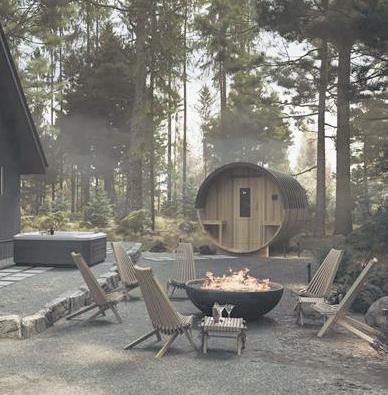

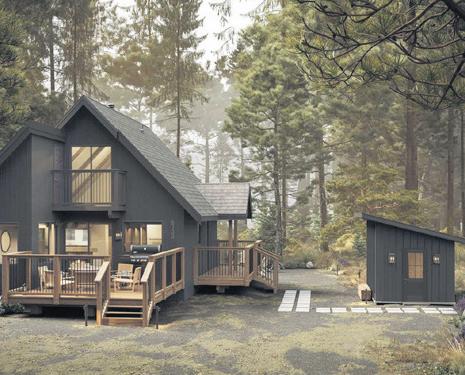


metre building—more than three times the size of the current facility—will include display areas, a foyer, a reception desk, and a gift shop that will serve as a gathering place for groups and events. The addition of a third storey is also a possibility should the museum need to expand in the future.
According to Whistler Museum curator and executive director Brad Nichols, the new building is crucial, as archival materials have built up over the years, resulting in space limitations. The expanded space will help provide a spot for record-keeping long into the future.
“I think we’re [going to be] able to tell more stories and also being able to help preserve Whistler’s stories and people’s experiences, and that can be through both the exhibits as well as more adequate archival and artifact storage, which right now, we’re just running out of space for our archival holdings,” Nichols said.
In November 2021, the museum society received a cost estimate of $7,130,987 to construct and equip the proposed building. With rising construction costs, there is a need for a more significant contingency fund, so the museum has set a fundraising goal of $9 million.
For WMAS to keep the transferred land, it must raise 80 per cent of the necessary capital funds within six years, by Dec. 31, 2028, or the





RMOW will revoke the lease. As it currently stands, the museum needs $5,704,789 to complete the project.
“We know this project is a multimilliondollar build, and we have already started along the path thanks to community support. But we need significant financial assistance to get the new facility, a place that we want to be the heart of the history of our community, built,” Ladner said.
Once some capital is acquired, the museum hopes to get additional funds from other levels of government to cover a portion of the project’s costs. Now that the land-transfer agreement is signed, the new building is eligible for the Canada Cultural Spaces Fund, which could provide significant funding for the museum.


Councillor Jeff Murl, who sits as the RMOW’s representative on the WMAS, said that, partly because the transferred land represents significant in-kind support to the museum, the municipality will not use any money from its one-time Growing Communities Fund or from Resort Municipality Initiative funding to back the project.

“Council and staff have made it clear we have given [WMAS] essentially a lease on [the] land for free. That is a huge contribution from the municipality. That land alone is worth a small fortune,” Murl said.
“In the future, when this gets off the ground, the community will look at what other ways we can assist. But we don’t need to attach commitments to do any of that at this point because there’s a lot of money that has to be raised before this gets the greenlight to go ahead.”
Construction of the new building will start once the museum society raises sufficient funds and takes down the existing building. The museum estimates fundraising will take three to five years and construction between 12 and 18 months. The earliest anticipated opening date for the new facility is 2027, and a temporary artifact storage location will be required in the meantime.
“Hopefully, we’re going to see some money from the community to step up and make this a reality. It’s an ambitious target, but I think this community needs to house its artifacts and history properly because what we’re doing right now is not really cutting it,” Murl said.
People can donate to the building project at whistlermuseum.org/newmuseum. The donations will be managed through the Whistler Community Foundation’s new fund dedicated specifically to the building’s construction, which is separate from the foundation’s existing WMAS fund supporting the museum’s operations. Learn more at whistlerfoundation.com. n

UNDER PROPOSED BOUNDARIES, WEST VANCOUVER-SEA TO SKY RIDING WOULD LOSE CHUNK OF WEST VAN ELECTORATE
BY ROBERT WISLAB.C.’S WEST VANCOUVER -Sea to Sky electoral district could get a whole lot smaller.
Earlier this month, British Columbia’s Electoral Boundaries Commission released its final report recommending a redrawing of electoral boundaries across the province ahead of the next election. Reflecting the rapid growth of the Sea to Sky, the riding would lose a notable portion of the City of West Vancouver.
The area recommended to be cut and added to the neighbouring West Vancouver-Capilano electoral district spans from Rogers Creek, near 28th Street, to Cypress Creek, near Stearman Avenue, and includes the neighbourhoods of Altamont, West Bay and Westmount, with the northern boundary set at Highway 1.
Even while losing 3,650 residents under the proposed boundaries, the reimagined riding would still count one of the largest populations in the province, at 62,161, which is 15.6 per cent above the provincial average. Only two other ridings in B.C.—the redrawn West Vancouver-Capilano district, and the Salmon Arm-Shuswap district in the Interior—would have more residents.

Jordan Sturdy, MLA for West-Vancouver Sea to Sky and former Pemberton mayor, expected to see the change in the riding’s boundaries
25,635, is worth nearly twice as much as a vote in West Vancouver-Sea to Sky.
The report also recommends the creation of six new ridings, four in Metro Vancouver and one each in the Okanagan and Southern Vancouver Island, and changes to the boundaries of 72 of the 93 ridings in the legislature to account for the province’s growing population, which rose by 7.6 per cent between 2016 and 2021.
The 2020 provincial election saw the BC Green Party surge in the Sea to Sky region by 8.66 per cent, winning nearly every poll north of Horseshoe Bay, including every poll in Whistler and Pemberton, and coming within a hair of taking the riding from the BC Liberals, who have held the riding by strong margins since 1991.

The BC Liberal Party (now BC United Party) won the riding by just 60 votes, after a judicial recount confirmed the win by a margin of just 0.24 per cent, the closest race in the province. Sturdy’s narrow victory was largely due to him taking West Vancouver by healthy margins, winning a dozen polls there by more than 60 per cent. Now, under the redrawn boundaries, some of these areas will now be in the neighbouring West VancouverCapilano riding.
Sturdy doesn’t believe changing riding boundaries will significantly impact the results in the next election, pointing to the 2020 election as an outlier pandemic election with a party leader few in the riding were excited about.


“Honestly, I don’t believe that we can look at 2020 as a normal election. Every election is unique. It has a unique cast of characters, leaders, policies, and visions, so I think each election is unique and is fought on a case-bycase basis,” Sturdy said.

E x p l o r i n g M o u n t a i n R e s o r t
H o u s i n g P o s s i b i l i t i e s
T h u r s d a y , A p r i l 2 7 , 2 : 0 0 P M
W h i s t l e r C o n f e r e n c e C e n t r e
A t i m e l y a n d r e l e v a n t s y m p o s i u m i n p a r t n e r s h i p w i t h t h e C a n a d a W e s t S k i A r e a s A s s o c i a t i o n
f e a t u r i n g p a n e l d i s c u s s i o n s a n d a n a u d i e n c e
Q & A M o d e r a t e d b y G D M a x w e l l , s p e a k e r s f r o m a c r o s s N o r t h A m e r i c a w i l l i n c l u d e A l R a i n e ,
G e o r g e R u t h e r , D a l e M i k k e l s e n , D u a n e J a c k s o n ,
K a t e R o d d i c k , a n d S t e v e B a y l y
Buy
to keep pace with population change, but was surprised the riding’s population remained among the highest in the province.
“What I was actually anticipating was that there’d be probably a lower population in the Sea to Sky than what they set [the boundaries at], so that it could allow for future growth, because if we continue to see 22-, 19- and 32-per cent growth in the Sea to Sky [reflecting population growth in Squamish, Whistler and Pemberton, respectively] over the last census period, obviously, that will put things significantly out of balance,” he said.
The average electoral quotient in the province is 53,773 people. Several ridings in Northern B.C. have populations well below the average. Still, the commission decided against recommending to enlarge the ridings due to their vast geography.
The result of the commission’s proposal, Sturdy posited, is that a vote in a riding like Peace River South, with a population of only
“People seemed to like [former Premier John Horgan] as an individual, but it’s never really been a NDP region or riding. But for us, I think many people didn’t like the BC Liberal leader either, very much so. So, if they couldn’t vote for him, they didn’t want to vote NDP, so what’s your choice?”
Assuming Premier David Eby doesn’t call an early election, the next provincial election is set to take place on Oct. 19, 2024. So far, only the BC Green Party has confirmed their candidate for West-Vancouver-Sea to Sky, with former District of Squamish staffer, Jeremy Valeriote, returning for another run. Sturdy would not say if he intends to run in the next election.
Valeriote, meanwhile, said he is generally happy with the redrawn boundaries.

“It makes it more likely than ever to allow voters to elect a BC Green candidate, which is great. I think people in the past maybe thought that a Green vote wasn’t the best use of their vote, but now that we see the potential to elect a BC Green, I think it’s a promising possibility,” he said. n
Taking place on the traditional unceded territory of the Skwxwú7mesh and Lílwat Nations, the WI is grateful for the ongoing support of its visionary founders and community partners

“It makes it more likely than ever to allow voters to elect a BC Green candidate ...”
- JEREMY VALERIOTE

HOUSING—OR LACK thereof—isn’t just a Whistler problem.
In fact, mountain resorts throughout North America have been struggling in recent years to adequately house residents who live, work, and play there.
To help foster ideas between those communities, the Whistler Institute is partnering with the Canada West Ski Areas Association (CWSAA) Spring Conference—set to take place in Whistler from April 25 to 27— to host a multi-panel discussion on the topic, called A Roof Over Our Heads: Exploring Mountain Resort Housing Possibilities.
“We’re not necessarily going to focus on the challenges,” said Suki Cheyne, executive director of the Whistler Institute. “We’re aware of what the challenges are, but we will explore what different communities have done, what’s worked for them, and spark ideas for people to try in their communities as well. We’re not solving housing in an afternoon, but we can have an interesting and informed discussion about what works in different communities.”
The discussion is aimed both at those from other communities attending the CWSAA conference, but also Whistler locals.
The first half of the two-part discussion
will focus on Whistler’s housing history, with panelists Steve Bayly with the Whistler Valley Housing Society (also a founding director and the original general manager of the Whistler Housing Authority); Kate Roddick, senior project leader at Whistler Blackcomb; and Duane Jackson, former Resort Municipality of Whistler (RMOW) councillor, and chair of the Whistler 2020 Development Corp.
“Because we have two distinct audiences at this event—the CWSAA delegates and the local community—there will be many people from outside Whistler, and being in Whistler,
it’s interesting for them to learn what Whistler has done as a community,” Cheyne said.
And, despite housing hardships, Whistler, statistically speaking, has actually “successfully housed a large percentage of its workforce,” she added.

The second half of the talk will “move further afield, looking at other jurisdictions and areas—what’s worked well,” Cheyne said.
That panel will feature Al Raine, mayor of Sun Peaks (who has a long, storied history in Whistler, including helping to develop it); George Ruther, director of housing in Vail,
Colo.; and Dale Mikkelsen, who was recently hired as head of the RMOW’s climate action, planning and development services division, and previously worked as the director of development and chief operating officer for Simon Fraser University’s UniverCity.
“Every community is unique. Whistler has had its own opportunity, in respect to the 2010 Olympics; we received land, and the housing is part of that. Not every community will have had that, but other communities will have had other things happen. We’re really hoping for an interesting panel onstage,” Cheyne said.
There will also be time for audience Q&A after the discussion, which will be moderated by Pique columnist G.D. Maxwell.
“He’s not going to shy away from the questions that need to be asked,” Cheyne added. “He’ll make sure it’s an interesting conversation.”
Interest in the event, meanwhile, is strong, with tickets already selling well.


“I think (the goal is to) share ideas and spark ideas,” she said. “I would hope it would be of interest to anyone who wants to learn more about how housing in Whistler has evolved and where it’s moving.”
The event takes place on April 27 from 2 to 4:30 p.m. at the Whistler Conference Centre. Tickets are $25 at whistlerinstitute. com/courses/resort-housing. n
TWO RECENT CLOSE CALLS ON ALPHA LAKE REITERATE THE RISK OF EARLY-SPRING CONDITIONS ON WHISTLER’S LAKES
BY ROBERT WISLAON A CLEAR, SUNNY DAY in the middle of March, Whistler’s Jack Traa witnessed an incident at Alpha Lake that raised some concern. While walking in the nearby dog park, he noticed a woman pleading with her canine to return after it had chased a group of geese onto the semi-frozen ice.
“The dog kept running and proceeded to run around the lake, and just when you think it’s going to come off the lake and back onto the dock, well, then the geese do a second lap, and the dog continues to follow them around again and land on the far side of a bit of open water,” Traa said. “And that’s where the dog continued across the lake and right into the open water.”
Once it became clear the dog would not be able to climb out of the lake on its own, its two owners, a woman and a man, immediately took off from the dock to save their dog from the frigid water, about 200 feet from the edge of the dock. Although much of the lake was still covered in ice, rising spring temperatures made walking on the lake unadvisable.
Traa called 911 for assistance, but, fortunately, emergency services were not required, and the couple managed to rescue their dog from the chilly waters. But it wasn’t without a cost. During the rescue, the woman ended up in the lake, and although she eventually pulled herself to safety, she emerged soaked and shivering.
“Fortunately, they had driven to Alpha Lake Park. So, we got her in pretty good shape. She was dry and feeling OK now, so we got her into her car, and they hung out there for a little while. So, it turned out OK: they had their dog, and they were safe,” Traa said.
The outcome turned out to be the bestcase scenario, with the woman avoiding hypothermia—or worse, drowning.
Two weeks later, Traa learned that another dog had fallen into Alpha Lake and had to be rescued by a Whistler Fire Rescue Service crew. (A representative for the fire department was not available for comment before press time,)
Hilton Whistler Resort & Spa is currently searching for a house or condo to be used as Staff Accommodation.




These two close calls inspired Traa to speak up in an effort to raise awareness of the early-spring conditions on Whistler’s lakes before something more serious occurs. He brought his concerns and a few ideas to the Resort Municipality of Whistler’s April 3 council meeting.
Traa’s recommendations included installing personal floatation devices along the Alpha Lake shoreline; installing more signage detailing the dangers of thin ice; erecting a temporary barrier during unsafe conditions; and providing more communication around the threat of thawing lakes.
According to RMOW manager of legislative services Pauline Lysaght, the municipality is considering these recommendations and believes communication is the best tool to avoid future accidents.
“We were very lucky in both of these cases that they were both successful, and as you pointed out, the fire department did a fantastic job. We are discussing this between our fire rescue services, our parks operation team, and almost more importantly, our communications department, because this really is a scenario where education and communication is one of our best tools,” Lysaght said at the council meeting.
“It’s at that time of year right now where it could be staff, it could be visitors, it could be residents; they’re just not aware it is unsafe, and there’s always going to be that time at the early end of late winter.”
The Canadian Red Cross advises that ice should be at least 15 centimetres thick for walking or skating alone, 20 cm for group skating or games, and 25 cm for snowmobiles.
Mayor Jack Crompton noted that people should stay off all ice-covered lakes in Whistler as temperatures rise this spring, and immediately call for emergency support if they see someone in distress.

“Lake rescue should be done by professionals, and calling 911 is the right approach. If you see someone in distress, we have an incredibly skilled team at the Whistler Fire Rescue Service, who are equipped to do this work,” he said.
For more ice safety tips, visit redcross.ca. n
The benefits with having Hilton Whistler as your tenants are that you can rely on your home being properly cared for We have a designated captain for each house, we conduct regular cleaning and maintenance inspections, and strive to create a stress-free and long-term relationship with owners
INTERESTED TO RENT OUT YOUR PROPERTY?
PLEASE CONTACT
Viktoria Lundkvist on 604 966 5031 or vlundkvist@hiltonwhistler com
The Resor t Municipality of Whistler is drafting a Whistler Cemeter y Master Plan to accommodate an expanding range of inter nment and memorial options at the municipal cemeter y located on Alta Lake Road
As par t of this wor k, the RMOW is seeking community input to help us anticipate future need and inter nment preferences to ensure those who desire to have Whistler Cemeter y as their final resting place, can do so in alignment with their last wishes


For more information, scan t he QR code with your mobile device Resor t Municipality of Whistler whistler ca
Scan the QR code to:
• Learn about the Cemeter y Master Planning process
• Complete the online sur vey
IN 2021, A HASHTAG started on socialmedia platform, TikTok, warning women of an apparent “National Rape Day” on April 24, urging women to stay home and, in some cases, to arm themselves in self-defence.
“If you’re ever attacked, take a piece of them with you,” one user advised, according to a report by Vice Media.
Users were convinced women were in danger after a threatening video had apparently been shared on the popular social-media platform. Hundreds of reaction videos, amassing hundreds of millions of views, quickly piled up.
The only issue? No such video seems to exist.
Two years later, and the viral hoax is still making waves among youth, according to local police.
“The hoax has resurfaced on TikTok among youth and the Sea to Sky RCMP are bringing awareness to it for parents/guardians to have conversations with their youth on the topic,” read an RCMP release Tuesday, April 11.
Sea to Sky RCMP went on to encourage the reporting of “all incidents of sexual assault to police,” with several options for reporting,
including calling 911 for emergencies, attending a police station in person, or calling the non-emergency line at 604-932-3044.
Locally, the Howe Sound Women’s Centre (HSWC) is also set up for third-party reporting in the Sea to Sky through its Traverse Project, which allows those 14 and over to report
business hours Monday through Friday at the Squamish General Hospital.
In 2021, the HSWC also helped realize two long-held visions for Whistler: establishing a temporary, emergency safe-house program, using unoccupied short-term rentals and hotel rooms; as well as affordable, second-stage
in Pemberton, which can house a small family.
For more information, visit hswc.ca.

In its release, the RCMP highlighted The White Hatter, an internet safety and digital literacy program that has “turned this hoax into a teachable moment,” police said. Learn more at thewhitehatter.ca.
April is Sexual Assault Awareness Month, an annual campaign to raise public awareness and to educate communities and individuals on how to prevent sexual violence. Between April 16 and 22, the Whistler RCMP detachment will be collecting women’s toiletries, gas and grocery cards, and bus tickets to assist women who have suffered domestic and genderbased violence, police said. Donation bins will be placed at the detachment, located at 4315 Blackcomb Way in the village, and the donations will be passed on to the HSWC.
anonymously to police via a trained support worker. The Traverse Project’s response team can be reached by call or text at 604-389-9168.
Forensic sexual assault exams are also available in Whistler and Squamish 24/7, an initiative that was set up in 2020. Previous to that, the exams were only available during
housing in the form of a Whistler townhouse for women and gender non-confirming individuals fleeing gender-based violence
That’s in addition to the existing transition house in Squamish, which accepts individuals from across the corridor and can house up to seven people at a time, along with a safe house
That same week, the HSWC will also be hanging a clothesline at the Whistler Public Library in recognition of its Clothesline Project, “a public display bearing witness to violence against women,” according to the HSWC’s website. Each shirt hung on the line is marked with words or art aimed at increasing awareness of the impact of violence against women and providing an outlet for survivors to “break the silence that often surrounds the experience.” n
“The hoax has resurfaced on TikTok among youth and the Sea to Sky RCMP are bringing awareness to it for parents/guardians ...”
- SEA TO SKY RCMP
THE CHANGE TAKES EFFECT APRIL 15 AND COMES ON THE HEELS OF RATE CHANGES TO SEVERAL MUNICIPAL PARKING LOTS IN THE MUNICIPALITY
BY ROBERT WISLA
PREPARE TO PAY a bit more to park as the Resort Municipality of Whistler (RMOW) is introducing year-round paid parking on Day Lots 4 and 5, beginning April 15, with the funds directed towards active transportation initiatives and the transit system.

The move to implement year-round paid parking in the two day lots aims to promote parking turnover, advance the RMOW’s Big Moves Climate Action Strategy of reducing automobile usage, and getting non-residents to pay their share for the local transportation system, according to Whistler Mayor Jack Crompton.
“Paying for parking is one of the few ways non-residents participate in funding Whistler’s transition to other modes of transportation. Transit and other preferred modes of transportation are funded by parking fees, which ultimately reduces the costs for much-needed climate action infrastructure,” said Crompton in a release.
The cost to park in the Day Lots will remain at the current rate, $2.50 per hour, or $8 per day, in effect daily until 5 p.m. Meanwhile, the price of monthly parking passes has been reduced, from $36 to $25.
Previously, parking in lots 4 and 5 was
free 150 days a year in the off-season, a measure that had long been positioned as a way to help locals keep their costs down in one of the most expensive resort towns in the country.

In addition to the year-round pay parking in Day Lots 4 and 5, parking on several municipal streets and parking lots has also gone up.
Starting April 3, hourly rates increased, from $2 to $2.50, on Sundial Crescent, Blackcomb Way, Village Green, the visitors’ loop, municipal hall, the library, and in both the underground and surface lots at the conference centre. The evening rates for the underground conference centre lot and at the library rose from $5 to $6.25, while the daily rate increased there from $20 to $25. The monthly rate for the conference centre’s underground Level 4 lot went up, too, from $70 to $88.

“We need to motivate every resident and visitor to adjust how they move around the resort. Personal vehicles are Whistler’s largest source of greenhouse gas emissions, and we are not on track to meet our target: to reduce emissions by 50 per cent of 2007 levels for 2030,” said the RMOW’s manager of climate and environment, Luisa Burhenne, in the release. “Every measure we take right now counts.”
The decision to implement the increased parking rates came about after Whistler’s
mayor and council recommended the Parking Lot Operating Committee (PLOC) implement the change at the Jan. 24 council meeting. The
PLOC includes two senior staff members from the RMOW and two from Whistler Blackcomb.
In 2022, the RMOW generated a significant amount of parking revenue, exceeding the municipality’s budget expectations by $918,000. Last June, the RMOW raised parking rates in Day Lots 1 to 5. The rate changes are estimated to create $400,000 in additional revenue and another $267,000 from the year-round day lots, for a combined annual increase of $667,000.
According to the RMOW, the funds from user-pay parking go towards local transit and sustainable transportation programs, like the summer bike valet service, and transit subsidies, like the Spirit Pass and free transit days, through the Community Transportation Initiative Fund.
Additionally, thanks to the increased revenue, the High School Transit Pass Pilot Program will expand to include Grade 7 students registered in Whistler schools. With local kids under 12 already riding free, in addition to its high-school pilot, now all Whistler children get free transit from birth until Grade 12.
Whistler residents and employees can purchase a resident-employee parking pass online or in person at municipal hall during business hours or by phone at 604-932-5535.
Learn more about the parking changes at whistler.ca/parking. n

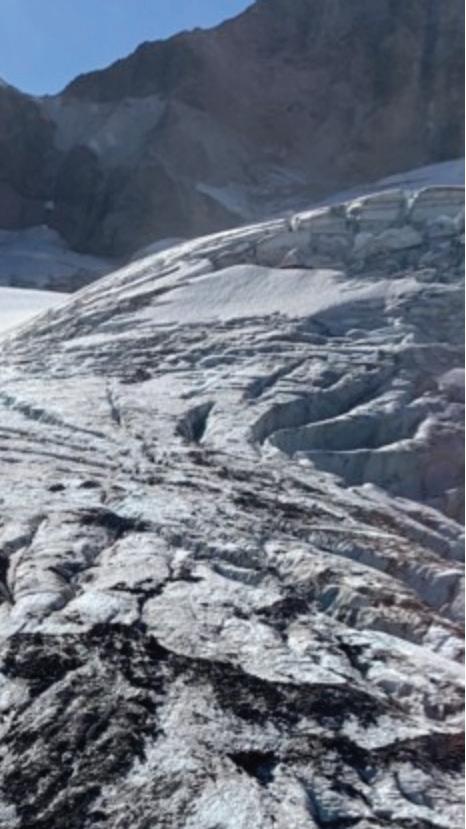 BY MEGAN LALONDE
BY MEGAN LALONDE
IN THE ALMOST 60 YEARS since a ski resort began operating on Whistler Mountain, the Sea to Sky corridor has boomed.
A gravel road turned into a multi-lane highway, while the number of people who called Whistler home grew from under 1,000 when it was incorporated as a resort municipality in 1975 to almost 14,000 in 2021, according to Statistics Canada’s most recent census. That’s before taking into account the corresponding population spikes in Pemberton and Squamish.
Despite those changes, the region has, geographically, stayed fairly consistent since settlers first showed up—including the Garibaldi Volcanic Belt (GVB), the northern arm of the Cascade Volcanic Arc that includes massifs such as Mount Baker and Mount St. Helens. It’s well documented that much of the rocky terrain across the Sea to Sky can be attributed to a long period of extensive volcanic activity spanning millions of years, culminating with an explosive eruption of Mount Meager about 2,350 years ago.
What’s less clear is how significant
a hazard volcanoes like Mount Cayley and Mount Garibaldi in Whistler, and Meager near Pemberton, pose to the corridor and its growing population today. Are those volcanoes at risk of erupting? What would happen if they did?
It’s what academics like Conner Morison are working to help figure out.
The University of Edinburgh PhD student authored Mount Garibaldi: hazard potential
can be more prepared for unexpected eruptions,” the authors added.
“Nothing has changed—I don’t want to spark undue alarm,” Morison told Pique. “But this is bringing Garibaldi a bit more up into line with other volcanoes that are dormant, but potentially active.”
He added, “There’s no evidence to suggest that it will never erupt again.”
reaching all the way to Squamish, highlighting potential risks if a similar event was to occur today. In the event of an eruption, Whistler and its infrastructure could be severely impacted by volcanic ash and tephra, or rock fragments, while the hot lava could even spark forest fires, depending on the time of year. Still, those previous eruptions occurred in an undeveloped landscape that was covered by retreating ice, said Morison, making likely impacts of any future eruptions difficult to predict.
Gaps of thousands of years between eruptions is common, particularly in the Cascades. “We need to know more about how often Garibaldi has erupted in the past—and why is it quiet now?” Morison added.
from a long-dormant volcanic system in the Pacific Northwest, alongside volcanologist Catherine Hickson, based on research Morison conducted as an undergraduate at St. Andrew’s University. The research paper was published in the Canadian Journal of Earth Sciences last month.
The paper compiles existing research about the Mount Garibaldi Volcanic System, but argues more monitoring is needed to paint an accurate picture of “the hazards posed by long-dormant but potentially active volcanoes,” such as Garibaldi, the paper stated. It’s “important so that communities
Morison said researchers haven’t been able to determine whether a magma chamber still exists underneath Garibaldi, but can tell the volcano erupted roughly 10,000 years ago, towards the end of the Ice Age. “But that’s not to say we’ve identified the most recent eruption,” he said. “That’s just the deposit that has been radiocarbon-dated—there may well be something that has been missed, but further research on Garibaldi would perhaps find that.”
Evidence of both lava flows and hot, groundhugging ash and debris flows called pyroclastic density currents from that event was found
Those occurrences have been better documented at Mount Meager, another GVB massif located about 60 kilometres northwest of Pemberton. The volcano was the site of Canada’s largest landslide in 2010 and has been studied for its geothermal energy potential since the ’80s, but drew renewed interest after a helicopter pilot, by chance, spotted gas seeping out of fumeroles, or vents, on Meager in 2016.
Aside from its most recent eruption about 2,350 years ago, researchers recently identified another eruption that they estimated took place approximately 24,000 years ago, said Glyn Williams-Jones, a volcanologist and chair of the Earth Sciences department at
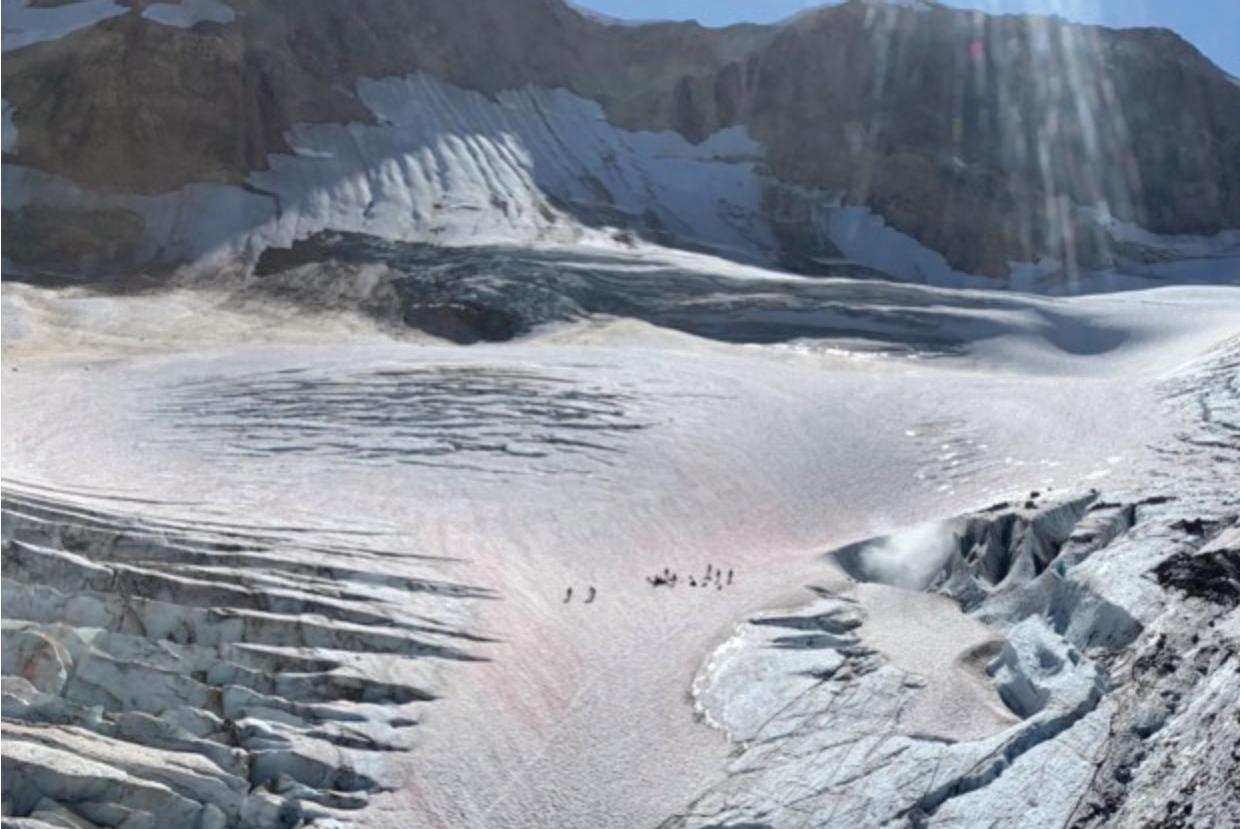
“We need to know more about how often Garibaldi has erupted in the past—and why is it quiet now? ”
- CONNER MORISON
Simon Fraser University (SFU).
That data “is important because it allows us to start to try to get a handle on how the volcano behaves,” he explained.
Last summer, Williams-Jones joined researchers from the University of British Columbia, SFU, the University of Tennessee Knoxville and NASA’s Jet Propulsion Laboratory, plus “a whole army of expert cave search-and-rescue professionals,” for several days in Meager’s glacier caves.
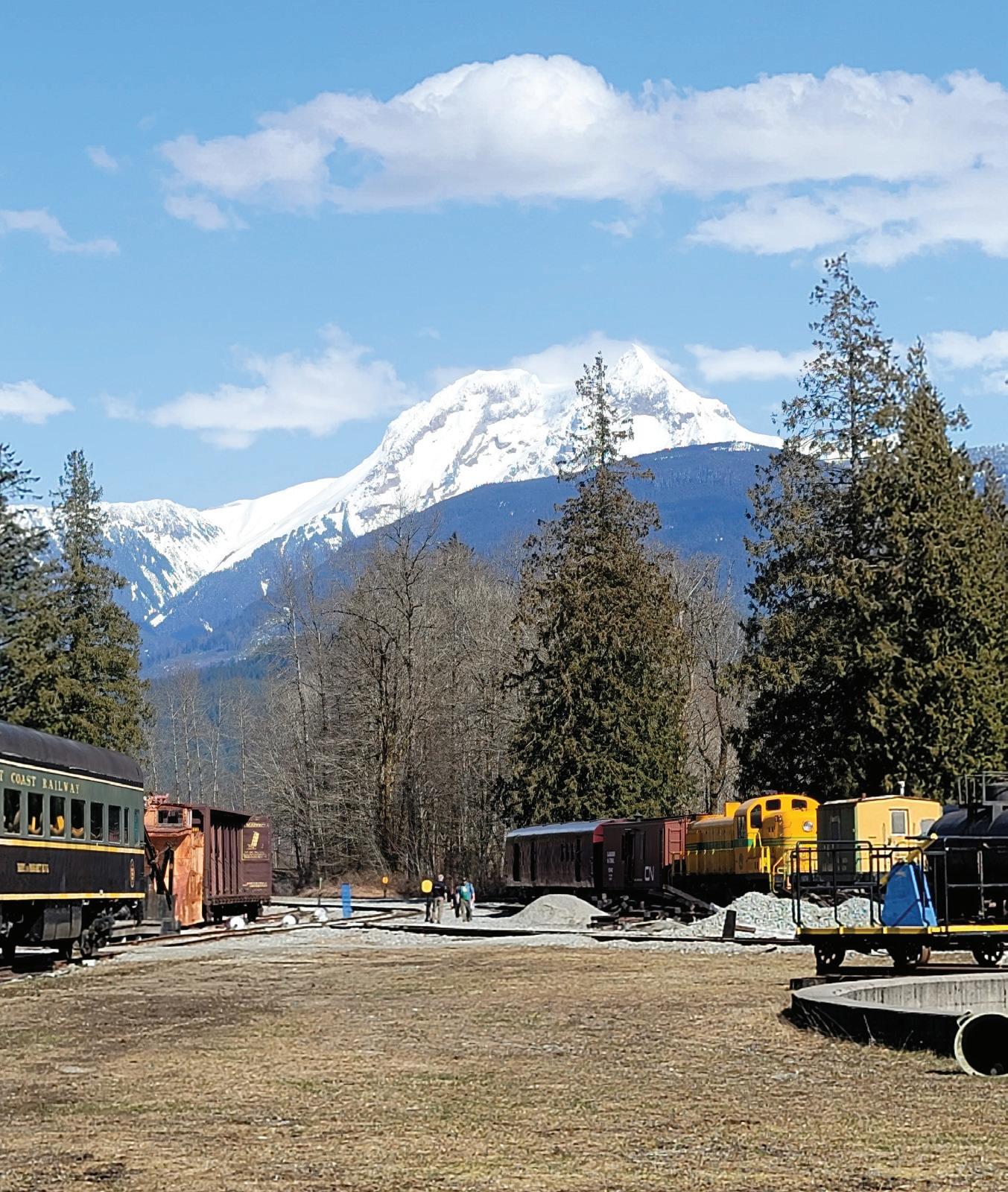
Williams-Jones said researchers located and measured a few of those fumeroles, and determined sulfur dioxide was present within the ice caves. That “clearly supports the idea that this volcano’s obviously not extinct,” he said.
Studying those fumeroles is just one of several multidisciplinary research methods crews are currently using to learn more about Meager. Teams are turning to both computer models and cameras to monitor how Meager’s ice caves and slopes are changing alongside the climate, while Williams-Jones and his fellow researchers are currently working with provincial and federal agencies, like Natural Resources Canada, to develop a “semi-automated satellite monitoring program” using Canada’s RADARSAT satellite system to measure how the terrain is changing within the GVB. That monitoring is already underway at Garibaldi. Meanwhile, Meager Creek Development Corp., the group working to harness geothermal energy from the site, also shares data with researchers


Four seats plus lounge seat $10,000.00 + TAX
30 Strategically placed hydrotherapy jets
Seven seat lounger tub $13,500.00 + TAX
44 strategically placed hydrotherapy jets
FREE DELIVERY TO WHISTLER
mountainsedgespas.ca (604) 966-8305





from the seismometer and other monitoring tools it operates onsite.
“The things that we’re trying to understand are: are the movements on the mountain due to just the instability of the mountain, because of things like changing climate, or are there signals of renewed volcanic activity?” he explained. “We don’t see that at the moment, thankfully, but at the same time, that’s where we’re trying to expand the ground-based monitoring.”
One way to accomplish that would be a bigger network of inexpensive seismometer models, or through good old fashioned firsthand accounts from those recreating throughout the GVB’s peaks. In other words, citizen science.
Williams-Jones’ ultimate goal would be to develop an app or portal where those observations can be submitted.


“What I’m always looking for is people who’ve seen something different,” he explained.
“If people who are in the area, who were out there skiing or hunting, or whatever and they see something odd, whip out the phone, take a photo … ‘I smelled rotten eggs here, and I saw hot ground here that I’ve never seen before.’ That kind of information is really important, because we’ve got this big, broad country that is often inaccessible or challenging to access,” Williams-Jones added, “but we have people who are getting out into the backcountry.”
From an academic perspective, “we still know relatively very little about these mountains that are in our backyard,” he said. “That’s where a lot needs to be done.” n
GAUGING GARIBALDI The authors of a recently published research paper say more monitoring is needed to accurately assess the hazards associated with the Mount Garibaldi Volcanic System, as seen from Squamish last month.IF THE GLOBAL SUPPLY-CHAIN shortage taught us one thing, it’s that we must remain patient for new technology to make its way to the retail floor. This has been especially true in the electric-vehicle space, with batteries in high demand and low supply, pushing prices up and testing the patience of early adopters.
BY VINCE SHULEYBut one electric recreational vehicle we’ve been waiting for has finally arrived.
The Nomad, a fully electric utility snowmobile from Quebec startup Taiga Motors, is rolling off the line in 2023. The company is currently on the road for a public relations tour, demonstrating its nowavailable products. No more prototypes, no more estimated arrival windows. Ski resorts across North America will have their first electric sleds for operational tasks for the 202324 season. Starting price? USD$17,490.
A couple of weekends ago, Taiga held a demo event at Canadian Wilderness Adventures (CWA) in the Callaghan. CWA co-owner Allan Crawford has been a proponent of snowmobile electrification for years, first hosting Taiga’s prototype testing in 2017 and providing ongoing feedback on how to optimize the unit’s design.
The Nomad looks more or less like any other utility snowmobile, with a wide ski stance (for stability when cornering on groomed roads) and a 154-inch (391-centimetre) studded track with 1.6-inch (four-cm) lugs to propel the snowmobile forward. This track setup is designed more for the frozen groomed roads of the Prairies and Eastern Canada and not designed to function in deep coastal snow, but more on that later. The demo units didn’t have stock accessories such as the two-up seat, windshield and cargo racks attached, but
battery to burn or want to show off how fast your Nomad can get up to—100 kilometres an hour.
Obviously, I started in Wild mode. The acceleration was as fast, if not faster, than any gas-powered snowmobile I’ve ridden. But after a couple of drags up the long, straight roads on Sproatt Mountain, I realized how fast the battery was depleting and promptly put the Nomad back into Sport mode. For reference, the range of the Nomad’s battery is 100 km “under ideal conditions.” Cold does
(slightly) improved climate policy. While fleets are a big part of the Nomad’s market, there are quite a few electric automobile owners buying a snowmobile for the first time to haul firewood to their winter cottage, simply because they now have a quiet, emission-free option to do so.
But the question on everyone’s lips is: when are the electric mountain sleds coming? The ones that can compete with the agile, powerful two-stroke engines that can blast through metres of fresh pow?
I posed this question to Rob Putnam, Taiga’s business development manager, pointing to their Ekko mountain sled, which is still in its prototype phase.

“There’s still some work and testing to do before we can get a range that will meet customers’ expectations. It’s not for lack of power; we know the power is there,” he said in an email. “But mountain sleds need to be light enough to easily tip onto one ski for powder carving, and the bigger and heavier the battery is, the more it affects the handling.”
all new units ship with them included.
I’ve only driven an electric vehicle once (a friend’s 2021 Nissan Leaf) and the experience was not dissimilar from my first time on an electric snowmobile. The Nomad was quiet to start up and its direct-drive electric motor whined as it began to move. The dash is the typical modern and colourful LCD screen with speed, RPM, kilowatt power output and battery level.
Like e-bikes, the throttle output is divided into three modes. Range is your typical eco/ low power mode for preserving battery life. Sport is the zippier mode where you start to feel the acceleration the Nomad is capable of. Then there’s Wild mode, when you have
affect battery life substantially, which is why the Nomad has a climate-control system for its battery (much like cooling systems for gas snowmobiles), so when starting from cold, the machine requires its own requisite warm-up time.

Electric sleds make so much sense for utility applications. I think back to my snowmobile guiding days, yelling at guests to kill their engines over seven rumbling four-stroke engines and how much more of an experience a snowmobile tour could be in natural surroundings. Ski resorts and industries looking to reduce their winter carbon footprint and fleet maintenance bills will also benefit, both financially and with
The other consideration is how much the track spins when pushing through deep snow, getting unstuck, hill climbing, all the fun stuff. All of that required power will affect range as well, and the backcountry mountains of B.C. won’t be getting charging infrastructure anytime soon.
Taiga is the first to market with the electric snowmobile, but industry heavyweight (and fellow Quebecer company) Ski-Doo isn’t far behind. The solution for electric mountain sleds likely isn’t that far away.
Vince Shuley isn’t trading in his 850cc two-stroke just yet. For questions, comments or suggestions for The Outsider email vince.shuley@gmail.com or Instagram @whis_vince. ■
“There’s still some work and testing to do before we can get a range that will meet customers’ expectations. It’s not for lack of power; we know the power is there.”
- ROB PUTNAMSLED HEAD The Taiga Nomad electric snowmobile is finally here and offers few compromises for trail and utility applications.
 PHOTOS AND STORY BY RÓISÍN CULLEN
PHOTOS AND STORY BY RÓISÍN CULLEN

For decades, people have found alternative ways to live in Whistler and the Sea to Sky, creative ways to be near the slopes and scenery. With limited land to build on and an affordable housing shortage that stretches back years, van life and Whistler life have often gone hand in hand. More recently, a new generation has been introduced to the van-life aesthetic through Instagram and TikTok. Influencers promise a life of freedom and adventure far away from the constraints of landlords and sprawling cities. Everyone has their own reasons for making their vehicle a home. For some, the romantic West Coast lifestyle is a chance too good to turn down. But for some trying to eke out an existence in Whistler, the van lifestyle is far from romantic and starkly contrasts with the shiny, sanitized content influencers put out. Sometimes, sleeping in a van is simply a way of avoiding sleeping on the streets. A new generation of social media consumers may associate #vanlife with peppy ’70s music and flawless photo filters. However, cold winters, leaks and bylaw officers knocking on windows in the middle of the night can turn a dream of freedom into a harsh reality.
the lifestyle after seeing van-life videos on TikTok and hasn’t looked back since.
“I saw van life on TikTok two years ago and I thought it was the coolest thing ever,” she says. “I bought my van that year. My van has the original interiors from the ’90s, so I’ve just been living with it how it is. I’ve had to learn to adjust. It’s not the best set-up but we make it work.”
Mac was lucky enough to be able to move in with family during this year’s brutal cold snaps, an option she was grateful to have. She has no plans to move back into a house or apartment anytime soon.
“I think this will be a long-term plan for me,” she says. “It’s different. It’s not the typical timeline where you graduate high school, go to college, get a job, have a family and buy a house. I saw it as a totally different option. I like the freedom of it and the experiences. I’ve done more in the last year of living in the van than I have done in my entire life.”

Mac is eager to upgrade the entirety of her beloved Nellie and says she has had mostly positive experiences with bylaw officers. She rarely stays in Whistler as it is too risky.
“Whistler is hard to stay in. I got a knock from bylaw saying that I couldn’t park there. They were super nice about it, though, and gave me ideas of other places I could go,” she says. “It might suck sometimes but it’s worth every hardship ever. I go to the Pemberton [& District] Community Centre for showers or go to friends’ [homes]. The community centre is my ride-or-die.”
I moved into a van in May. It fit in with my lifestyle. I like to do lots of sports. It’s easier because you don’t have to pay thousands of dollars in rent,” he says. “I’m 22, I should be able to have my own room while working in the outdoors industry. Staff accommodation was fairly cheap but it wasn’t nice at all.”
The ski instructor remained in his second-hand van throughout the winter, relying on a diesel heater to keep him warm. When his heater broke down, the young man had no choice but to find a house to stay in.
“You’re that bit closer to homelessness if you’re living in a van. If something breaks down, you’re fucked,” he says. “In summer, it’s genuinely better for me than living in a house. In winter, living in a house would probably be nicer.”
The young Whistlerite often reminds himself that things are not always as they seem, especially when they appear on your Instagram feed. He explained how there are varying degrees of van living, ranging from necessity to luxury.
“Things get wet and I’ve had leaks from the roof. Sometimes, it’s late at night and you’re dozing off when water starts dripping onto your bed. That sucks,” he says. “All the van-life people on the internet spent hundreds of thousands on a van. It’s basically a house on wheels. That’s entirely different to the younger kids who are at this.”

Dealing with bylaw largely depends on the season, the Scot says.

“In winter, they care less. I have been parking in the same spot and there are a community of people who are doing the same,” he says. “I got caught in the [day] lots twice when I first moved here. They knock on the window. They shout a bit. The first time, I answered but I just ignored it the second time. I disputed the fine and never paid it.”
He has found officers in Squamish far stricter.
“They woke me up with a flashlight at 5 a.m. in Squamish. I didn’t have curtains at the front at the time so I woke up with the light shining on me. That affected me,” he recalls. “They gave me a $100 fine as well, which I didn’t pay. You don’t feel safe afterwards.”
The young man doesn’t understand why you shouldn’t be allowed to park in nature or on public property.
“They told me I could go live at the Walmart. They are just moving everybody there, but Walmart doesn’t want the people in their parking lot,” he says. “I had just been parking on a dirt road somewhere. In Scotland, you could park wherever you want. It shouldn’t be a crime and it feels ridiculous to me.”
The man is currently working two jobs in Whistler and feels privileged to still have options when it comes to his own van life. For many others in the Walmart carpark, van living is simply a means of survival.
“There are a bunch of climbers from middle-class backgrounds that are here by choice. Then there are slighter older people that totally aren’t there by choice,” he says. “I just got another two-year visa. For as long as I’m here, I’m pretty happy to do what I’m doing.”

Calgary-born Stevie Beans has made a conscious effort to make only relatable content since deciding to document her own #vanlife journey. Her decision to move into a van came from a want for independence and to prove to herself that she could do anything she set her mind to.
“I’ve always been the kind of person who was always waiting for people to go on trips and hikes,” she says. “This is something I wanted to do to be more independent and present with myself. I was definitely inspired by a lot of people online.”
Stevie’s loved ones were worried about her setting off on a journey around British Columbia on her own.
Mackenzie Button and her adorable dog Nova have been living in their van (nicknamed Nellie) since October. They came to Pemberton because of the mild weather. “Mac” was drawn to
A 22-year-old Scottish man (who asked to stay anonymous for fear of facing backlash from employers) says the van life fulfils all of his needs. He had been living in staff accommodation and felt the party lifestyle often clashed with his personal priorities.
“I moved to Whistler at the beginning of last winter and

“Some of my family had safety concerns because I was doing it alone as a woman. They were also worried about my van catching on fire because that can happen with some of the older models. They can overheat or something bad can happen. I always call my family when I’m going to sleep somewhere. I’ll give someone a ring so that they know where I am,” she says. “I had to learn how to do maintenance on my van so that I’m safe. I keep bear mace and a knife. I keep a few things in my van, just in case. I have locks and screens so nobody can see that I’m

‘YOU’RE THAT BIT CLOSER TO HOMELESSNESS IF YOU’RE LIVING IN A VAN’
sleeping in there alone. I just try to be very intuitive. People are capable of being far more independent than they realize.”
Stevie has a rule: she won’t park overnight anywhere without service and tries to stay close to other people and highly trafficked roads. She is also very cautious about the van-life content she post, as she wants to make sure people undersand the risks and pressures along with the positives.

“I wanted it to be relatable. I bought my van for $4,000 and I didn’t have expectations for the video to blow up. I just wanted it to be a boost to others who also wanted to be independent,” she says.


Stevie now has over 12,000 TikTok followers, something she puts down to her generation’s yearning for freedom in a time when the promises of life enjoyed by her parents— financial stability, homeownership, etc.—is out of reach for so many.
“We are expected to go on a certain trajectory. I think people want freedom, to live on their own terms, and have a sense of autonomy. Most of us are never going to own property,” she says. “People want to feel like they’re making their own choices and not being forced into a system. You’re van is your own space. You make your own rules with this life.”

An Australian woman in her 50s (who also wished to remain anonymous) understands that need for freedom all too well, having lived in a van for most of her adult life. The Whistler resident originally moved into a van when she first arrived in Canada to avoid being homeless, but has since travelled around several continents.

“What started as a very romantic thing became a survival lifeline. I’ve had some hardcore scary experiences, from being shot at in reservations, peppered with gravel from burnouts damaging my vehicle, and bruising myself. I’ve had uninvited critters entering the vehicle at night and getting stuck inside in a crazy frenzy. I’ve had graffiti, van parts removed, breakins, theft, police harassment, tickets, slides. I was even chased down by a farmer in a tractor who was intent on mowing me down,” she says. “You name it, I’ve experienced it.”
However, the Australian has now come full circle, having recently become a property owner.
“I am experiencing the other side. I can’t cope with the few bad apples that have no respect for the environment or the struggling property owners paying insane costs and taxes in Whistler,” she says. “I now understand why I had all of those harrowing experiences.”
Rock climber Thomasina Pidgeon helped set up the Vehicle Residents of Squamish Advocacy Group after having lived in a van since she was 19. She fears things are changing for the worse.
“I started living in my van in Whistler in 1995. Back then, it was a little bit more free to do it. We used to stay in Day Lots 4, 5 and 6. It used to be legal then. We never went further than that,” she says. “We had our little community there and it was a simple way of living.”
Thomasina has also had her fair share of negative experiences with bylaw officers in Squamish “shining their lights in your face and making you feel like you’re a criminal,” she says.
It’s now not unusual for van-lifers to find notes left on their windows from locals urging them to get jobs.

“It’s just really unwelcoming all around, which is a real shame because it used to be about freedom. It’s a freedom that’s being erased by the bylaw. The ability to roam, to move and to change your scene is being penalized. It’s an erasure of a lifestyle that forces everyone to live the same way. It also penalizes the people who have no choice but to live in a vehicle,” she says.
A spokesperson for the Resort Municipality of Whistler said bylaw officers largely try to direct van-lifers elsewhere before issuing a ticket.
“Staying overnight is not permitted in Day Lots 1 to 5 between 3 and 6 a.m. from November 1 to March 31, so there is time to clear the snow and do necessary maintenance. From April 1 to October 31, the maximum stay is 24 hours,” the representative writes in an email.
“We post our information on Overnight Parking online to ensure both our residents and visitors coming to town can plan and prepare appropriately. It is very cold here in the winter. Our
Bylaw Officers focus on directing people to the campgrounds or other community services to find appropriate accommodation, but fines are occasionally applied as we work to enforce our bylaws and ensure the lots are clear for maintenance.”

Jackie Dickinson, executive director of the Whistler Community Services Society (WCSS), says there are a range of services available to help those living in vans. A snack fridge, new sleeping bags and temporary accommodation are just some of the supports the WCSS team can provide.
“We are trying to communicate to people that everyone is always welcome,” Dickinson says. “There is definitely an increase in access to all of our services. They have more than quadrupled since the onset of the pandemic. Our food bank numbers have gone up, and the numbers for
food insecurity are even higher. Over 50 per cent of people coming into our food bank are spending more than 50 per cent of their gross income on housing. The majority of people coming into us are working in our community. Wet feet are a huge health concern that people don’t talk about when it comes to van living. Dry clothing to support their physical health is very important.”
Learn more at mywcss.org.
Meanwhile, Whistler Councillor Cathy Jewett feels that real change is needed to help those most affected by Whistler’s housing crisis.
“The last time there was a homeless count here was in 2018. We don’t really know what the numbers are,” she says. “Whistler is not alone. The whole country has been hit with this housing crisis. It’s so hard to build something that’s affordable without any kind of government assistance. There is a lot more that could be done to make housing more affordable by different levels of government. That’s not happening.” ■
MOST WHISTLERITES understand skiing. Some prefer the adrenaline rush found in the backcountry, while others forgo the verticality of Whistler Blackcomb for the expansive trails criss-crossing Callaghan Valley.
Now add to that a lightweight, .22-calibre rifle designed for accuracy in cold conditions. Then try skiing a few kilometres, stopping, pulling that rifle off your shoulder and hitting targets from 50 metres out. That’s biathlon.
The idea of skiers wielding rifles goes back to 18th-century Scandinavian soldiers patrolling their borders, although the Winter Olympics did not pick up biathlon as a sport until 1960. Myriam Bédard of Quebec is the only Canadian to win an Olympic medal in the discipline, earning two golds and a bronze in 1992 and 1994.
From March 13 to 19, a bevy of Whistlerites carried on the tradition at the IBU North American and Canadian Championships in Valcartier, Que. Four seniors returned home with hardware: Hanne Stadnyk, Lucas Smith, Graham Benson and Mia Rodger.
Stadnyk won two bronze medals in the Senior Women’s sprint and mass start events to go with silver in the single mixed relay alongside Lucas Smith, her fellow Whistler Nordic Development Centre (WNDC) athlete.
Smith earned an individual silver in the mass start as the race’s top Canadian and narrowly missed out on the senior men’s pursuit podium in fourth.
Meanwhile, Benson locked up two medals in contention against senior boys: mass start silver and pursuit bronze.
Rodger, who could not be reached for comment by press time, was the most decorated of them all, winning double gold in the senior girls pursuit and sprint. She also teamed up with Benson for a respectable fifthplace finish in the single mixed relay.
A few Whistler youths reached the podium as well. Dan Gilfillan took home silver in sprint and pursuit in the youth men category, in addition to combining with Moira Green for mixed relay gold.

All are grateful for the opportunity to represent the Maple Leaf on home soil.
“I think it’s a really nice way to wrap up the whole season and come together with everyone across the country. You get to see everyone again, have some fun races, and a lot of the pressure kind of comes off you,” said Stadnyk, who is originally from Saskatchewan.
Benson admitted to being a little anxious going in. At 16 years old, he is among the oldest in his age category and raced against more than 40 opponents at his second trip to Nationals.
Ultimately, he overcame those pre-race jitters.
“I was able just to start thinking about the process a little more, and not worry about the outcome so much, and that really helped me lock in and put down some good racing,” he explained.
Smith is the most experienced of the bunch, having spent time in Europe on the International Biathlon Union (IBU) Cup circuit. He knew that many eyes were on him and his peers as the older, more accomplished contenders in Quebec. Although the Winnipeg, Man. native is used to facing rivals from abroad, he knew he still had to be on point at the event, which also serves as the North American Championships.
“It’s not really a walk in the park,” Smith said. “Approaching Nationals for me was about making sure that I was staying sharp and undergoing the same processes domestically as I would internationally.”
All the athletes experienced highs and lows over the course of their Valcartier experience. Stadnyk ground through fatigue to reach the women’s mass start podium, while issues hitting his targets relegated Benson to tenth in the sprint.
Smith stumbled in the sprint as well, ending up seventh in what was not his finest outing. Rodger incurred a two-minute penalty in her mass start, which was enough to bump her down to sixth.
Yet, they managed to regroup. Benson and Smith, in particular, draw energy from head-tohead races such as the mass start and pursuit,
so it’s no surprise they performed better in those events. Then there are relays, which add another dimension to any skier’s gameplan.
“You kind of start to reason things through with yourself [in an individual event], validating why you’re making certain decisions, but when you’re on a team with someone else, you don’t have that [luxury],” explained Stadnyk.
Smith agrees wholeheartedly. “When you’re in a relay, it kind of feels like your whole identity just falls to the wayside,” he said. “It’s about the team, and who is going to come after you and what they want. That gives you a sense of strength, because you’re fighting for something that you [and your team] collectively believe in.”
Benson was born in Vancouver and took up biathlon at eight years old—earlier than normal because coaches were impressed with his older brother. Stadnyk tried it out as a teen after her own brother was recruited by a provincial coach, and she is still going strong at age 25.
Meanwhile, Smith’s cross-country skiing background laid an excellent foundation for his present as a biathlete. At 10 years old, he thought shooting a gun was “the coolest thing in the world” and he still feels that way 13 years later.
“For the average person, it probably seems crazy what we do, going from 180 or 190 beats per minute down to about 140, which is a nice calming heart rate for us to shoot at. And to do that in the span of 10 seconds,” said Smith.
“But it just comes down to breathing practice and mental fortitude.”
Full results from Valcartier are available at biathloncanada.ca. n

THE WORDS “KENDO” and “Whistler” do not often appear in the same sentence. In fact, many of you reading this probably have no idea what kendo is.

Long story short: kendo is a Japanese martial art in which fighters wearing a specific type of practice armour (called bōgu) try to score points by striking certain areas of their opponents’ bodies with bamboo swords (or shinai). The discipline traces its roots back to the Edo period from 1603 to 1868, considered a peaceful era of Japanese history.
With relatively few enemies at hand, samurai warriors honed their skills by sparring with one another. A father-and-son duo, Yamada Heizaemon Mitsunori and Naganuma Shirozaemon Kunisato, are credited with developing the precursors of modern shinai and bōgu in the 18th century to facilitate widespread training with minimal injury.
Kendo has since descended and deviated from kenjutsu, which teaches more traditional swordsmanship skills that samurai once used in battle.
As both a martial art and a sport, kendo remains popular in Japan and has spread to many countries around the world. It officially reached Canada in 1914 with the establishment of a dojo called Yokikan— which today is known as the Steveston Kendo Club in Richmond.
Whistler’s own kendo community is not nearly as well-established, but if all goes according to plan, it is here to stay.
Hiroaki Yano, founder of the Whistler Renbu Kendo Club, has been training for over 23 years. His life of skill and discipline has taken him well beyond the borders of his native Japan to Europe, South America and the United States. Yet, as a nature lover who enjoys skiing, hiking, camping and golf, Yano was bound to take interest in what Whistler has to offer.
After visiting multiple dojos in Vancouver, Yano felt that it would be possible to bring kendo to Whistler. Thus, he enlisted the help of his friend Dean Masahiro Ara, the head coach of Canada’s national team. Ara, in turn, introduced Yano to Albert Yeung, a fellow kendo practitioner who lives in Whistler but trains in Vancouver.
The trio joined forces to bring their chosen pursuit to the Sea to Sky.
Since its beginnings in January 2022, the Whistler Kendo Club has grown to 11 members: seven youths and four adults who practise on Wednesday nights at Myrtle Philip Community School. Eight of them took a big step forward back on Feb. 11 by competing in the 59th annual Steveston Kendo Tournament, one of the biggest and longest-running kendo events in North America.
Yano himself placed first among 64 contenders in the division for those ranked fourth Dan and up—in other words, senseis
or masters. He also reconnected with a group of his former pupils from California, who won the adult team competition.
None of his students won a match, but they have gained valuable experience in their own journeys.
“They could practise only 10 times with bōgu on before the tournament,” Yano said, explaining that it takes beginners anywhere from six months to a year to progress to the point where they’re allowed to don armour.
“I’m so proud of them.”
It hasn’t always been easy to attract and retain new students. Most Whistlerites have never heard of kendo, and the nature of the art— which includes contact sparring and hearty battle cries (or kiai)—can be off-putting to some.
Nonetheless, Yano would encourage any and all comers to pick up a shinai—including those who may feel that their athletic days are behind them.
“Age doesn’t matter,” he said. “To achieve the highest rank in kendo, the minimum age is 45 or 46 years old. Building human character, manners and etiquette are so important as well.”
Yano didn’t always keep that in mind. He was very competitive as a younger man and regularly took part in kendo tournaments since his days growing up in Kagawa Prefecture on Shikoku Island. Many respectable performances, including several championship wins, came in Japan and the United States over the years, but in hindsight, Yano realizes he was missing something.
“When I went to Europe and South America, they reminded me about what kendo is like,” he explained. “Winning is also important, but making friendships and [practising proper] etiquette, that’s more important than winning.”
Now 30 years of age, Yano brings a wealth of experience to his nascent club. He coached Team Portugal at the 2017 European Kendo Championships in Budapest, Hungary, and is currently the head coach for Team Colombia. Some might be tempted to rest on their laurels, but that’s not in Yano’s nature—nor is it part of the discipline he’s given his life to.
“Even if you get to the highest rank [in kendo], it’s not the end,” he said. “You’ve got to keep working. I’m still trying to be better, better, better, all the time, even if I win a competition.”
Learn more at facebook.com/ whistlerkendo. n




We are back!! - Can’t wait for Spring...?
• Be(e) patient...
• Resist the urge to rake and clean up everything! Wait until a few days above 10-15 degrees to allow ‘lil critters and pollinators to wake

• Do spread out snow piles to melt evenly
• Do move leaves from drains, stones, lawns into gardens More information at info@heikedesigns.com
WEE ELECTRIC-GREEN radish leaves pushing up through black soil from seeds my parents planted. Young rhubarb leaves like curled-up sea creatures unfurling in my grandad’s garden. Then, later in spring, a sunshine-yellow marigold flower bursting open much to my delight—the first plant I grew myself, under the guidance of a Grade 1 teacher thoughtful enough to have us kids save tin cans, punch drainage holes in the bottom with a hammer and nail, then fill them with rich prairie soil and a single seed we could watch grow, like we were.
BY GLENDA BARTOSHWith spring officially here in the Sea to Sky, people are buying up bulbs and seeds like there’s no tomorrow. Can you blame them? Spring has thankfully, mercifully, sprung again, and nothing marks it better than growing something, anything—something quirky or beautiful to look at; something to eat; something that combines both, like edible flowers or weirdly shaped squashes.
All this was not lost on Gaylord Nelson, a U.S. senator from Wisconsin. Fifty-three years ago, he and his main organizer, Denis Hayes (now head of the Bullitt Foundation in Seattle, which focuses on urban ecology in the “Emerald Corridor” from Vancouver
to Portland, Ore.) tapped into the anti-war movement to plant the seeds for the first Earth Day. Held April 22, 1970, and every April 22 since, it was close enough to the official first day of spring and far enough into the season that all things “Easter” and “green” would still be on our minds, plus we wouldn’t shy away from protests or anything outdoorsy, given the balmier weather.
CBC has a great report on the first Earth Day, including events on the Canadian side of the border, which saw protestors in Windsor, Ont., carrying signs with slogans like “Lake Erie died for our sins” and singing a modified version of John Lennon’s “Give Peace a Chance” (“Give Earth a Chance”).
Picture the context for that first Earth Day in 1970: People were barely conscious of the need to protect the environment. But one-10th of Americans took part in some kind
of Earth Day event. By the end of the year, the U.S. Environmental Protection Agency was set up and all kinds of environmental legislation was passed.
Who says a single idea can’t lead to greater things?
Today, Earth Day is widely regarded as the largest secular observance in the world, with more than a billion people joining in. Earth Day organizers continue to focus on whatever’s needed to keep our planet green and “alive” enough to support the kids of tomorrow—like getting plastic out of public schools. (One child having a disposable lunch every school day generates some 67 pounds of waste—mostly plastic utensils and bags— each school year.) Or picking up plastic and other crap littering our great outdoors.
In Whistler this year—for the 32nd time!— the RMOW will host the annual Pitch-In
Two years ago, Nadine White, public services librarian, and Jeanette Bruce, the library’s marketing and programming coordinator, worked with AWARE to start an excellent resource at the Whistler Public Library—a seed library.
Both the April 25 event and seed library reinforce the whole idea of Earth Day. “(They) encourage a more direct and personal relationship to our food cycles— increasing community food security and reducing our carbon footprint by helping community members access affordable and healthy options grown close to home,” says library director Mikale Fenton.
The seed library is located in the “Gardening” section of the library. It’s all very simple. Gardeners check out and donate seeds on their own. No library card needed! And no personal information is tracked. Organic, non-GMO seeds less than three years old are welcome; no bear attractants or invasive species allowed.
PHOTO BY SIMONKR / GETTY IMAGESBut here’s the trick: The seed library was started during the height of the pandemic, so it’s desperate for donations. As you get ready to plant your “garden”—whether it’s a full-on spread or just a pot or two on your windowsill—keep in mind what seeds you could donate. After all, most of us seldom use the whole package. And local landscapers, check out your “extras.” Anything on-hand Whistler’s seed library could use will keep the cycle growing. n
Day to align with Earth Day. On Saturday, April 23 (the day after Earth Day), join other volunteers and community groups to pick up litter throughout Whistler Valley. Grab your vests and supplies and gather at the Public Works Yard on Nesters Road between 8 and 9 a.m. All morning, crews from the municipal roads department—the official supporter of the event—will collect full bags and hand out free snacks and water to volunteers. Then, from noon until 2 p.m., enjoy a free barbecue at Fire Hall No. 1 in the village, thanks to the Whistler Fire Rescue Service and donations from local grocery stores.

As for all those green efforts sprouting up now, what better way to get started than by learning from seeds themselves? “Learning From Seeds” promises to be a great presentation on April 25 at the Whistler Public Library. Co-sponsored by AWARE, Whistler’s community-based powerhouse for all things environmental since 1989, the presentation is led by Emily Hannah, a graduate of the ground-breaking Permaculture Institute who has loads of experience in regenerative farming.

You’ll learn about the basics of seedstarting, the importance of seed-saving, seeds as the cornerstone of food security, and how important heirloom seeds are for genetic resiliency and diversity in our changing world. Bonus for parents: You can bring your kids with you, provided they’re old enough to appreciate the material. Note that everyone needs to register in advance.
Once you’ve had your eyes opened wide to so many amazing aspects of seeds, “check out” one of the best tools on offer at the library—the seed library.
Glenda Bartosh is an award-winning journalist who loves to garden. She saves seeds. n TEAM-UP CLEAN-UP Whistler’s 32nd annual Pitch-In Day will see volunteers helping to pick up litter across the valley on April 23—the day after Earth Day.

OPEN DAILY: 6 a.m. to 9 p.m.
F FLEXIBLE REGISTRATION

Flex-reg’ classes have a separate fee and allow you to register for classes on the days that fit your schedule.
R REGISTERED FITNESS
Registered fitness classes have a separate fee and a defined start and end date. Pre-registration is required for the entire set of classes.



I INCLUDED FITNESS
These classes are included with your price of admission for no extra charge.
ARENA SCHEDULE
Please see whistler.ca/recreation for the daily arena hours or call 604-935- PLAY (7529)


THE FILMMAKER SHOWDOWN RETURNED TO WSSF FOR FIRST IN-PERSON EVENT SINCE 2019, WITH A FEW CHANGES AND FAMILIAR FACES
BY MEGAN LALONDE“WOULD YOU RATHER get stung by a bee every time you leave your house or have to battle a gorilla once a year for 50 years?”
That age-old question earned Two Dontas One Proctor Productions (also known as Whistler friends Ryan Proctor, Kris Dontas and Kevin Dontas) the $5,000 grand prize at the World Ski and Snowboard Festival’s (WSSF) 72-Hour Filmmaker Showdown on Tuesday night, for their submission Would You Rather. Well, that and some impressive cinematography.

In the short film, Kevin Dontas’ character discovers the theoretical dilemma isn’t quite so theoretical when, after declaring he “would love to battle a gorilla” and blowing out a candle, his birthday is rudely interrupted by a surprise assault from—you guessed it—a giant gorilla. It’s not as fun as he imagined.
The traumatic annual attacks drag on for years, with the gorilla turning up to ruin birthday after birthday until the victim finally decides enough is enough. He’s waging a counter-offensive. Spoiler alert: Dontas learns the gorilla’s definition of “battle” isn’t blackand-white, and a heartwarming interspecies
friendship ensues. The catch? It has an expiration date.
The winning entry comes following Two Dontas One Proctor’s 72-Hour debut, the People’s Choice Award-winning Benched, in 2019.
Fitting Would You Rather into the five-minute limit was the group’s biggest challenge, Proctor told the crowd, but filming the project “was actually pretty fun … We just hope you guys laugh.”
cash. The People’s Choice winner took home an extra $250 in the form of a Gibbons gift card.
In case you need a refresher about how it works: teams are given three days to shoot, edit, and produce a three- to five-minute film. Filming must take place within 100 kilometres of Whistler Village, and each submission must incorporate a mandatory phrase (in past years, this was a prop instead). Half the teams had to find a way to work “they built a halfpipe” into their short film, while the others got “You
like a documentary, according to Banks; and Walker’s Marcus, You’re a Genius, which was an entirely solo effort he wrote, shot, acted and edited himself—but it was stand-up comedian Killeen who managed to secure his second-ever WSSF People’s Choice win with The Buttler
The film follows Killeen as he loses his job and his housing, before finding his way to an exotic dance service, Butlers in the Rough— “half the price, twice as nice,” if its tagline is to be believed—that turns his life around. One scene that earned some of the loudest laughs was the perfectly parodied “real estate” clip advertising 2117 Lake Placid Road, otherwise known as a 1997 Dodge Grand Caravan. It had upgraded interiors, though. A rare opportunity!
The gorilla jump-scares clearly resonated with the approximately 669 ticketholders (that’s according to host Feet Banks) who packed into the Westin ballroom on April 11 for the first in-person iteration since 2019. The 72-Hour Filmmaker Showdown has been a hallmark of each spring’s WSSF since the early 2000s. This year, the event was presented and produced by the Whistler Film Festival for the first time, and moved to the Westin from its usual home at the Whistler Conference Centre. The crowd was smaller, but it wasn’t any less rowdy.
Aside from the four-figure prize for the first-place film, all other finalists earned $500
can’t park there, mate.” IYKYK.
Despite the four whole years that have elapsed since the last showdown, there were more than a few familiar faces on-screen, behind the camera and on the judging panel.
In addition to Proctor and the Dontas brothers, Showdown finalists included defending champion and stop-motion specialist Kyle James with The Stuff We’re Made Of; previous People’s Choice winner Kyle Killeen, plus first-time finalists John Burke, Godwyn Walker, Jamie Parker and Mark Torlay.
All the films were well received—in particular Burke’s Hopelessly Lovin’, a Grease parody set in Whistler’s bar scene that was more
The vast majority of the judges knew what it feels like to be in competitors’ strapped-for-time shoes: the panel included two-time Showdown winner Ben Giesbrecht; five-time finalist and three-time Best in Show winner Charles Nasby; plus Jonny Fleet, a seven-time finalist with two Best in Show wins, and four People’s Choice awards; and three-time winner Jordan Ettinger, alongside former Toronto International Film Festival staffer Vanessa Tam—“our actual judge,” as Banks referred to her.
When it comes to the criteria judges were looking for? “It’s pretty loose— it’s either your movie won or it didn’t,” Banks explained. “That’s the criteria. No cinematography, no acting awards, no script. It just goes on general vibe. Which is how it should be because the judges are drinking.”
WSSF runs until Sunday, April 16. Head to wssf.com for a full event schedule. n
BEST IN SHOWDOWN L to R; Ryan Proctor, Kevin Dontas and Kris Dontas celebrate with host Feet Banks after winning Tuesday night’s 72-Hour Filmmaker Showdown. PHOTO BY MEGAN LALONDE“It’s pretty loose—it’s either your movie won or it didn’t.”
- FEET BANKS

SHOWS RUN IN WHISTLER AND PEMBERTON THROUGHOUT APRIL
BY ALYSSA NOELPEMBERTON SECONDARY School’s drama teacher, Renata Zablotney, tends to prefer off-beat, unique productions for her students.
But this spring—for the drama program’s “at least 25th” play since 2015—she decided to change course.
“I talked to a lot of parents and they had vocalized that this was a popular play they had done in high school,” she says. “I have a tendency of doing a lot of new plays, or new takes on plays that a lot of people haven’t seen onstage, so I really wanted to revisit something that was a known classic.”
That classic: Joseph and the Amazing Technicolor Dreamcoat.
There is, however, an obvious challenge that comes with this popular production— which tells the story of Joseph’s struggle with, and ultimate triumph over, his 11 jealous brothers. It’s a sung-through musical, meaning the dialogue is conveyed almost entirely through song.
“I play the narrator all throughout the show,” says Grace Willis-Cook, a Grade 11 student in the class. “It was very scary watching the movie because I was like, ‘This girl is singing in every single scene.’ She has the most extravagant high notes—and she hits them! I’ve only done proper singing in my bedroom, listening to sad-girl songs, crying to myself. But I think putting it into action is so fun.”
Jonathan Cabezas, who plays the starring role of Joseph, is also looking forward to the new challenge.
“Our last production, The Wedding Singer, I was really nervous about that,” he says. “I
don’t think I have the most beautiful voice out there, but after doing that show, it boosted my confidence for this one.”
For her part, Zablotney was a little worried about recruiting at least 12 willing students to sing, but they wound up with a cast of 14.
“I panicked because I had a lot of people willing to do set,” she adds. “It’s a pretty fresh group, but luckily I get Johnathan and Grace for one more year.”
The incoming drama students are largely in Grades 7 and 8, but with the group working on the project since November, they’ve all come a long way, Willis-Cook says.
“It’s cool to see younger people get into the arts more. It was really only seniors last year and people my age. This year, we have so many younger people willing to get in,” she says.
After putting months of work into the play, the cast is looking forward to a total of six dates in Whistler and Pemberton.
The first take place at the Maury Young Arts Centre on April 15, 19, and 25 and with shows in Pemberton at the Pemberton Community Church on April 20, 21, and 22.
“I think we’re mainly now trying to get into our theatre mind and anticipate what feelings we’ll feel on the day to prepare for the anxiety, but I think it will go off without a hitch and be better than anticipated,” Zablotney says.
In the end, she’s proud of how far the group has come in the last five months.
“Watching the finale scene last time, I was welling up with tears,” she says. “It was so beautiful to me, but they make me incredibly proud and I’m so amazed how far they’ve come in their singing.”
Tickets for the Whistler show are $17.31, while tickets are $8.79 for the Pemberton shows, both available at eventbrite. ca/o/renata-zablotney-drama-teacherpss-27208486457. n
SPECIALTY HONEYS
pure local honeys • liquid honey

creamed honey •raw honey

infused honey • honeycomb
honey sticks
HEALTH & NUTRITION
bee pollen • royal jelly
propolis • supplements
oral health
HAIR & BODY CARE
PRODUCTS
soaps • skin creams
hair care • lip balms
PLUS beeswax candles and wax that burn bright & are smokeless

Level 1, 4090 Whistler Way
Resor t Municipality of Whistler
Canoe, kayak and SUP storage rack

rental spaces at Whistler parks
Staggered dates for seasonal reservations. SUP storage spaces will be available online from April 18 at 12 :30pm, and canoe/kayak spaces from April 19 at 12 :30pm.
Reservations are on a first come first serve basis online, and storage spaces typically sell out quickly
Rack spaces will be available for renters to use from April 19 to October 15.
See Canoe, kayak and paddleboard storage rental at: w histler.ca /SUPstorage
Resor
 COOL COAT Pemberton Secondary School’s drama class is performing Joseph and the Amazing Technicolor Dreamcoat in Whistler and Pemberton this month.
COOL COAT Pemberton Secondary School’s drama class is performing Joseph and the Amazing Technicolor Dreamcoat in Whistler and Pemberton this month.
CATCH THE GROUP AT THE MAURY YOUNG ARTS CENTRE ON APRIL 16 AS PART OF THE WHISTLER CHAMBER MUSIC SOCIETY’S CONCERT SERIES
BY ALYSSA NOEL
YOU CAN CALL LADOM Ensemble a lot of things.
Made up of a pianist (Pouya Hamidi), cellist (Beth Silver), accordionist (Michael Bridge), and percussionist (Adam Campbell)— who all met many years ago at the University of Toronto studying music—the group blends their classical and cultural backgrounds to make something entirely unique.
You can call it “world music” (“It’s wildly unspecific; technically everything is world music. It’s from this planet, but I personally like it,” says Bridge) or even “borderless music” like some have described it.
But the term Bridge has come up with to describe their sound: concert music.
“Concert music to me means any piece of music of any genre performed in a way that is worthy of being listened to with focused attention in a fairly quiet, focused concert hall, where there’s such intricacy in the music arrangements that you really want to catch every note,” he says.
And there’s good reason to listen closely.
“Ladom is a unique group in that we don’t know of any other ensembles in the world
with the same instrumentation,” Bridge says.

“That means we have to compose or arrange everything—even if we play a well-known song, it’s with our own twist. It necessarily has to be our own twist.”

Their most recent album, The Walls Are Made of Song, released in 2019, for instance, features their take on both classical and folk tunes from Iran, the Balkans, Argentina and Central Europe.

For their next album—currently half recorded—Silver, the group’s cellist, wanted
to bring her Jewish heritage into the fold through klezmer music.
“That’s been the most exciting aspect for our group’s growth: we have half recorded a new album that’s focusing on klezmer and Persianinfluenced music,” Bridge says. “Our cellist Beth Silver … is the most recent member of the group. She hadn’t caught up with sharing her influence with the group yet.”
Ladom Ensemble will perform some of those new songs when they travel from Toronto to B.C. for a short West Coast tour this month.
Alongside a stop on Salt Spring Island and in Oliver, they’re also set to perform in Whistler on Sunday, April 16 as part of the Whistler Chamber Music Society’s concert series.
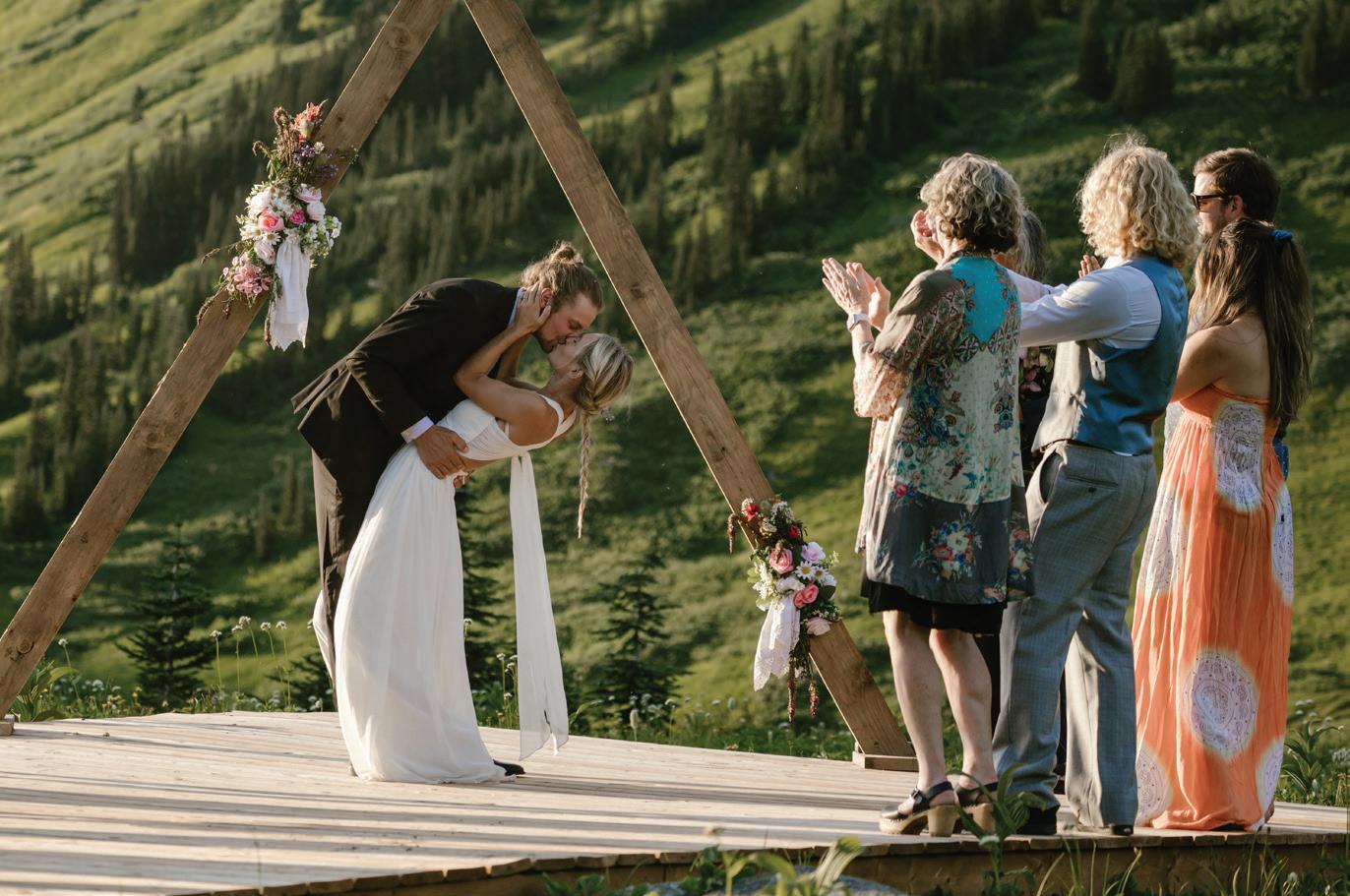

In addition to “klezmer and Iranianinformed” pieces, they will likely “cap it off with some tango and some East Coast Canadian music, which we always love to bring to the West Coast,” Bridge says.
(Campbell, the percussionist, hails from P.E.I.)
But, above all, the audience can anticipate a shared energy at the show.
“The Walls Are Made of Song, the album title of our last album, is a quote by the Persian poet Rumi,” Bridge says. “The reason we chose that is it captures the energy we try to give off in our concerts. We’re not just performing onstage, one-way into the room. We’re very much aware of what is going on in the room. We interact with the audience a lot. Everything that goes on in those four walls, it’s partly improvised. It’ll never be repeated. The audience is part of that too.”
Catch the Ladom Ensemble on Sunday, April 16 at 4:30 p.m. at the Maury Young Arts Centre. Tickets are $25 for adults and $20 for youth under 20.
Get them at showpass.com/ladom_ ensemble. ■


Here’s a quick look at some events happening in Whistler this week and beyond. FIND MORE LOCAL EVENT LISTINGS (and submit your own for free!) at piquenewsmagazine.com/local-events
Join The Point Artist-Run Centre in the Heritage Lodge as you sew the creative seeds that have laid dormant over the long, dark winter and spring into some fresh tunes.
Join their house trio for an afternoon of jazz grooves.
All musicians are welcome, just bring your instrument and join the jam. For piano players, they’ve got Howard, their heritage upright piano for you to tickle the ivories.
> April 16, 1 - 4 p.m.


> The Point Artist-Run Centre



> Drop in/ by donation
The Clothesline Project is a public display bearing witness to the serious problem of gender-based violence. Each shirt hanging on the Clothesline is decorated with words or images to represent a participant’s personal beliefs, understanding or experiences of gender-based violence.
Visit the library during the week of April 16 to 22, to engage with this interactive art installation. If you




stop by on Wednesday, April 19 between 1 and 4 p.m., you can decorate your own shirt to be added to the installation–all supplies provided.
> April 16 - 22
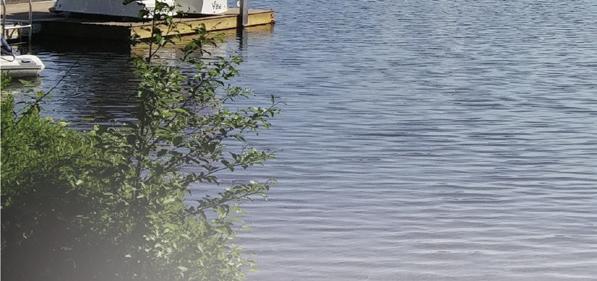
> Whistler Public Library

> Free

The annual end-of-season bash is back with music, sports, and culture events running until April 16. Catch the Saudan Couloir Race Extreme on Saturday, April 15 and the Slush Cup on April 16.
> April 14 - 16
> Various around Whistler






> For tickets visit wssf.com
The evening includes more than just art-choosing madness! Buying Night features live music, delicious appetizers, a silent auction, pop-up bar, and a few surprises thrown in along the way. Whether you rock up in cowboy boots or heels, we want you to dress to express. Entry tickets for buying night are $30; the cost of your art spot or how many you buy is up to you!
> April 14, 6:30 - 11 pm



> Maury Young Arts Centre


> $30 at showpass.com/anonymous-artshow-2023

Come watch your favourite team as they start their quest for the Stanley Cup! Volume on Canadian team games! Wear your team’s jersey and get entered to win a prize at the end of each playoff round!


WHEN I THINK of Whistler Blackcomb staff parties, I think of Mickey Mouse’s Christmas album and walking around the Whistler Conference Centre collecting little trolls from the Christmas crackers. It was shocking to my six-year-old brain that some of the adults did not want the trolls. Those trolls travelled across the world with me when my family moved to Australia, along with Mickey’s Christmas album, which still comes on the stereo every December, much to my father’s dismay.
While it is hard to believe, some of Whistler Mountain’s other staff parties sound even better. The 1986 year-end staff party will go down in the history books.
At the end of the winter of 1985-86, Canada was coming out of the recession that
to join the party. With absolutely no lifties, staff could ski down and hop straight onto the lift however they pleased.
Like the majority of Whistler Mountain parties back then, it was a fully catered affair. Booze and food were plentiful, with management flipping burgers and Pika’s overflowing with unlimited free drinks for all. Looking at photos from the event, the outfits scream 1980s spring skiing: Vuarnet shades all around, bright colours, and spectacular goggle tans. With many people dressed up in costume, it is unclear whether there was a theme or the costumes were just out to celebrate the end of the season.

Remembering the festivities, Janet Love Morrison recalled, “There was all this booze and so you’d have a couple of drinks and then you just ski down to Little Red, and load yourself up with no lifties. It was pretty crazy.”

Despite this, there were no serious





had gripped the country throughout the early ’80s. Peak Chair had not yet been constructed but was going in over the summer, and the competition between Whistler and Blackcomb mountains was still in full swing.
After Whistler Mountain closed to the public for the end of the ski season, the lifts turned on again for a staff celebration. Ullr was happy, with snow dumping overnight, so the celebrating staff got fresh powder all to themselves.
To get all the staff onto the mountain for the celebration, the gondola from Creekside ran for a few hours in the morning, and then closed once everyone was up. For the rest of the day, the Whistler T-bar and Red Chair were running unmanned, allowing everyone
incidents during the raucous party.
Whistler Mountain had a reputation for excellent staff parties, so much so that locals who did not work for Whistler Mountain paid for a helicopter to the peak so they could join the revelry!
Now living on the Sunshine Coast, photographer and longtime employee of Whistler Mountain, Dave Steers, remembered another side of the event. “The skiing was amazing and it was the last time ever that you could lap the peak and lay down tracks beside your last set.”
Before the chairlift went in, only a small number of people hiked the peak, so you could always get fresh tracks. Once the “weak chair” to the Peak was built, far more people began accessing the terrain. n
- JANET LOVE MORRISON
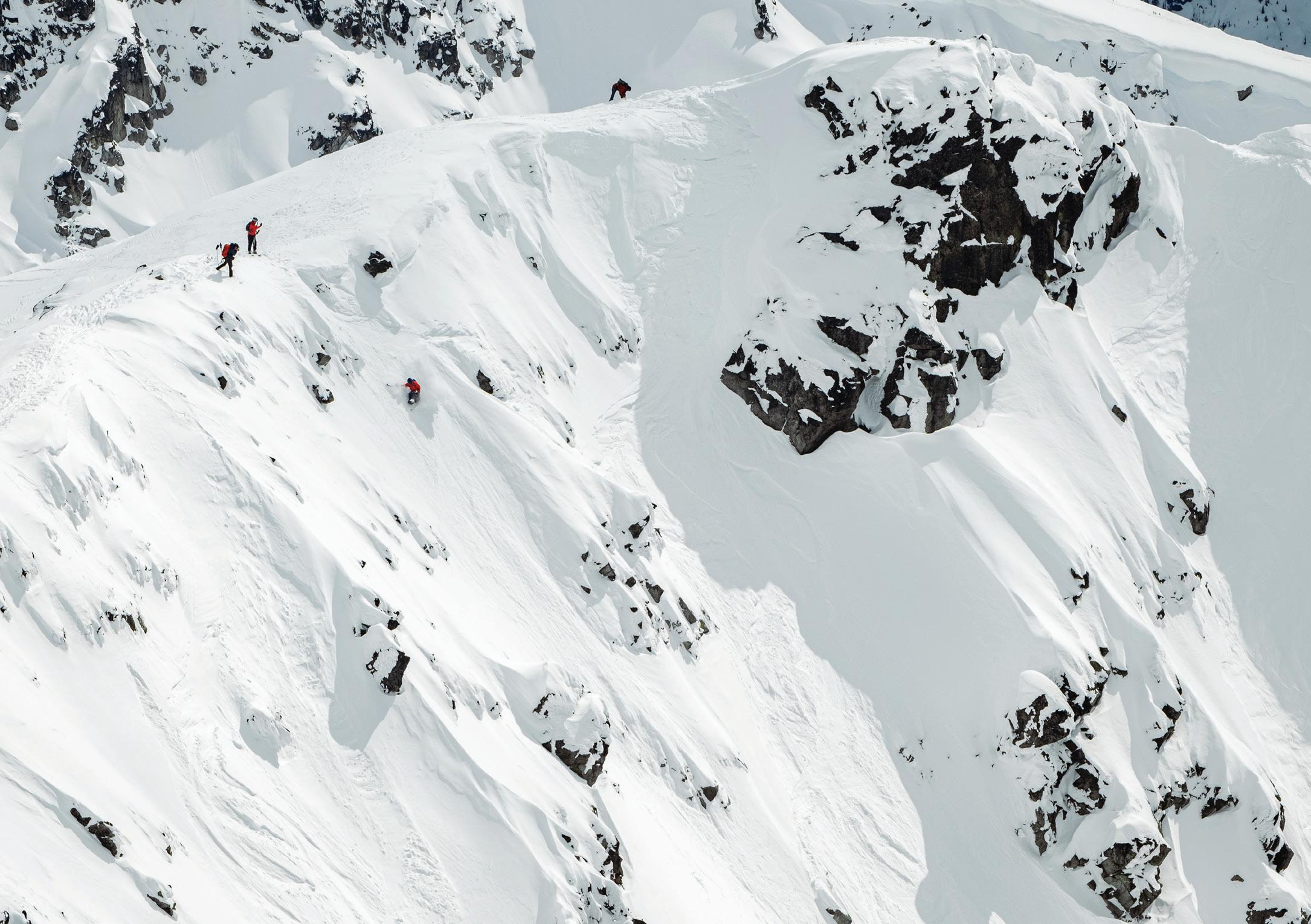










Celebrate Ear th Day in Whistler by joining the community PITCH-IN Day!
Last year, roughly 1800 kilograms of waste was collec ted in Whistler by approximately 500 volunteers.
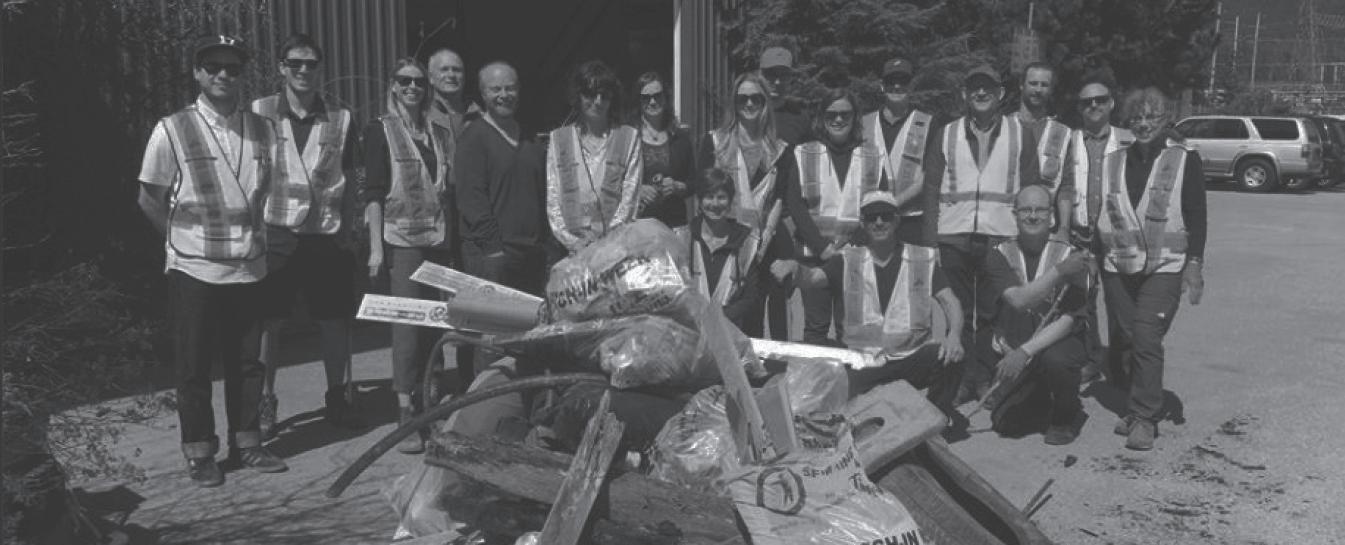
This year, volunteers, community groups and local spor ts associations will be at it once again, cleaning up lit ter in our valley
We invite you to take par t in this nationwide event by pitching in to clean up your neighbourhood, park or favourite Whistler spot.
For more information, visit: whistler ca /events/2023-pitch-in-day
OF APRIL 14
ARIES (March 21-April 19): I hope that in the coming weeks, you will keep your mind bubbling with zesty mysteries. I hope you’ll exult in the thrill of riddles that are beyond your current power to solve. If you cultivate an appreciation of uncanny uncertainties, life will soon begin bringing you uncanny certainties. Do you understand the connection between open-hearted curiosity and fertile rewards? Don’t merely tolerate the enigmas you are immersed in—love them!
TAURUS (April 20-May 20): An old sadness is ripening into practical wisdom. A confusing loss is about to yield a clear revelation you can use to improve your life. In mysterious ways, a broken heart you suffered in the past may become a wild card that inspires you to deepen and expand your love. Wow and hallelujah, Taurus! I’m amazed at the turnarounds that are in the works for you. Sometime in the coming weeks, what wounded you once upon a time will lead to a vibrant healing. Wonderful surprise!
GEMINI (May 21-June 20): What is the true and proper symbol for your sign, Gemini? Twins standing shoulder to shoulder as they gaze out on the world with curiosity? Or two lovers embracing each other with mischievous adoration in their eyes? Both scenarios can accurately represent your energy, depending on your mood and the phase you’re in. In the coming weeks, I advise you to draw on the potency of both. You will be wise to coordinate the different sides of your personality in pursuit of a goal that interests them all. And you will also place yourself in harmonious alignment with cosmic rhythms as you harness your passionate urge to merge in a good cause.
CANCER (June 21-July 22): Some scientists speculate that more people suffer from allergies than ever before because civilization has over-sanitized the world. The fetish for scouring away germs and dirt means that our immune systems don’t get enough practice in fending off interlopers. In a sense, they are “bored” because they have too little to do. That’s why they fight stuff that’s not a threat, like tree pollens and animal dander. Hence, we develop allergies to harmless substances. I hope you will apply this lesson as a metaphor in the coming weeks, fellow Cancerian. Be sure the psychological component of your immune system isn’t warding off the wrong people and things. It’s healthy for you to be protective, but not hyper-overprotective in ways that shut out useful influences.
LEO (July 23-Aug. 22): One night in 1989, Leo evolutionary biologist Margie Profet went to sleep and had a dream that revealed to her new information about the nature of menstruation. The dream scene was a cartoon of a woman’s reproductive system. It showed little triangles being carried away by the shed menstrual blood. Eureka! As Profet lay in bed in the dark, she intuited a theory that no scientist had ever guessed: that the sloughedoff uterine lining had the key function of eliminating pathogens, represented by the triangles. In subsequent years, she did research to test her idea, supported by studies with electron microscopes. Now her theory is regarded as fact. I predict that many of you Leos will soon receive comparable benefits. Practical guidance will be available in your dreams and twilight awareness and altered states. Pay close attention!
VIRGO (Aug. 23-Sept. 22): You don’t know what is invisible to you. The truths that are out of your reach may as well be hiding. The secret agendas you are not aware of are indeed secret. That’s the not-so-good news, Virgo. The excellent news is that you now have the power to uncover the rest of the story, at least some of it. You will be able to penetrate below the surface and find buried riches. You will dig up missing information whose absence has prevented you from understanding what has been transpiring. There may be a surprise or two ahead, but they will ultimately be agents of healing.
BY ROB BREZSNYLIBRA (Sept. 23-Oct. 22): Visionary philosopher Buckminster Fuller referred to pollution as a potential resource we have not yet figured out how to harvest. A company called Algae Systems does exactly that. It uses wastewater to grow algae that scrub carbon dioxide from the atmosphere and yield carbon-negative biofuels. Can we invoke this approach as a metaphor that’s useful to you? Let’s dream up examples. Suppose you’re a creative artist. You could be inspired by your difficult emotions to compose a great song, story, painting, or dance. Or if you’re a lover who is in pain, you could harness your suffering to free yourself of a bad old habit or ensure that an unpleasant history doesn’t repeat itself. Your homework, Libra, is to figure out how to take advantage of a “pollutant” or two in your world.
SCORPIO (Oct. 23-Nov. 21): Soon you will graduate from your bumpy lessons and enter a smoother, silkier phase. You will find refuge from the naysayers as you create a liberated new power spot for yourself. In anticipation of this welcome transition, I offer this motivational exhortation from poet Gwendolyn Brooks: “Say to them, say to the down-keepers, the sun-slappers, the self-soilers, the harmony-hushers, ‘Even if you are not ready for day, it cannot always be night.’” I believe you are finished with your worthwhile but ponderous struggles, Scorpio. Get ready for an excursion toward luminous grace.
SAGITTARIUS (Nov. 22-Dec. 21): I periodically seek the counsel of a Sagittarian psychic. She’s half-feral and sometimes speaks in riddles. She tells me she occasionally converses by phone with a person she calls “the ex-Prime Minister of Narnia.” I confided in her that lately it has been a challenge for me to keep up with you Sagittarians because you have been expanding beyond the reach of my concepts. She gave me a pronouncement that felt vaguely helpful, though it was also a bit over my head: “The Archer may be quite luxuriously curious and furiously hilarious; studiously lascivious and victoriously delirious; salubriously industrious but never lugubriously laborious.” Here’s how I interpret that: Right now, pretty much anything is possible if you embrace unpredictability.
CAPRICORN (Dec. 22-Jan. 19): “I’m not insane,” says Capricorn actor Jared Leto. “I’m voluntarily indifferent to conventional rationality.” That attitude might serve you well in the coming weeks. You could wield it to break open opportunities that were previously closed due to excess caution. I suspect you’re beginning a fun phase of selfdiscovery when you will learn a lot about yourself. As you do, I hope you will experiment with being at least somewhat indifferent to conventional rationality. Be willing to be surprised. Be receptive to changing your mind about yourself.
AQUARIUS (Jan. 20-Feb. 18): People of all genders feel urges to embellish their native beauty with cosmetic enhancements. I myself haven’t done so, but I cheer on those who use their flesh for artistic experiments. At the same time, I am also a big fan of us loving ourselves exactly as we are. And I’m hoping that in the coming weeks, you will emphasize the latter over the former. I urge you to indulge in an intense period of maximum selfappreciation. Tell yourself daily how gorgeous and brilliant you are. Tell others, too! Cultivate a glowing pride in the gifts you offer the world. If anyone complains, tell them you’re doing the homework your astrologer gave you.
PISCES (Feb. 19-March 20): I encourage you to amplify the message you have been trying to deliver. If there has been any shyness or timidity in your demeanour, purge it. If you have been less than forthright in speaking the whole truth and nothing but the truth, boost your clarity and frankness. Is there anything you could do to help your audience be more receptive? Any tenderness you could express to stimulate their willingness and ability to see you truly?
Homework: What’s your favourite lie or deception? Newsletter.FreeWillAstrology.com.
In addition to this column, Rob Brezsny creates
Resor t Municipality of Whistler whistler.ca/events/2023-pitch-in-day
Whistler

Family
FLOORING
owned & operated
Please contact smckay@tamwood.com




NOLEAK20YEARS250-533-9897


FullTime











SouthVancouverIsland-SomethingDifferent! workingwithourteamtomake yachtsshine,insideandoutsideexperiencenotrequired-enthusiasmis abilitytoworkatheights,inconfinedspaces,overthewater,in teamsorsolo,physicallydemanding,liftingofreasonableweight(50 lbs),communicatewellinEnglish, withbasiccomputerskills driver’slicense&PleasureCraft Operator’sCardassetsbutnot critical startingwage$22.00perhourwith benefitsafter3-months yachts@philbrooks.com https://philbrooks.com/
EMPLOYMENT
Work
WhistlerPersonnelSolutions
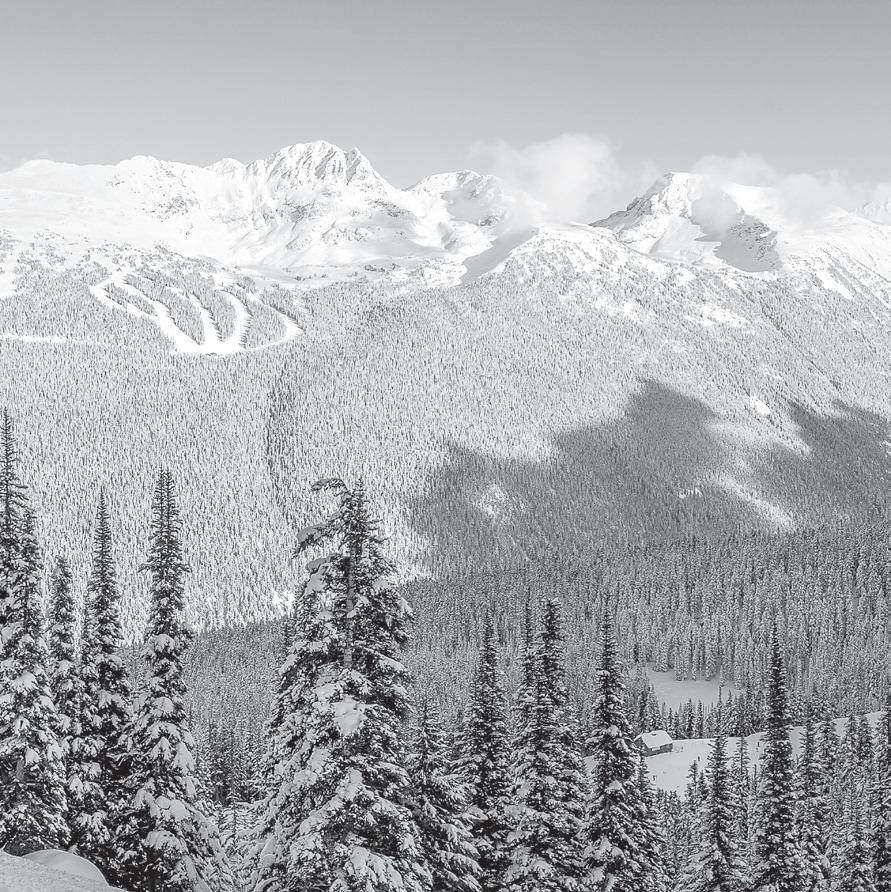





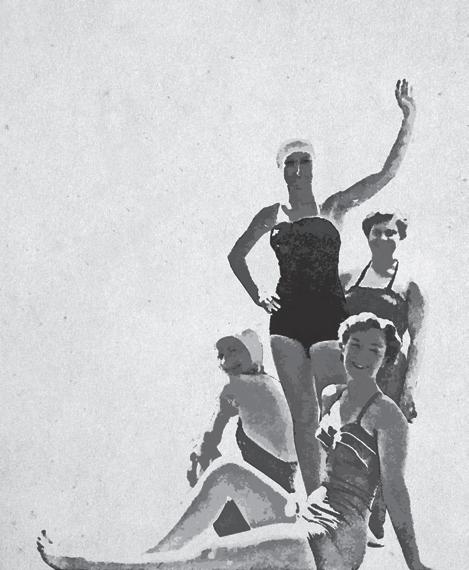



Full-time,part-time&tempjobs. Nocost,nostrings.604-905-4194 www.whistler-jobs.com










www.whistlerexcavations.com
We are currently recruiting professionally minded people to join our team.
Required:
Commercial Transport or Heavy-Duty Technician.

*Competitive wages, extended health benefits & tool allowance (after 3 months)
Please send resume to:
Email: info@whistlerexcavations.com
Recreation Sites and Trails BC is seeking quotes from individuals interested in managing the backcountry recreation site at Tenquille Lake, north of Pemberton, BC.
The operating season runs from mid-June through to the end of September. The operator is expected to remain on-site for multiple nights. They will be responsible for confirming registration of overnight visitors, maintaining the camp area and trails, and monitor visitor use and wildlife presence.
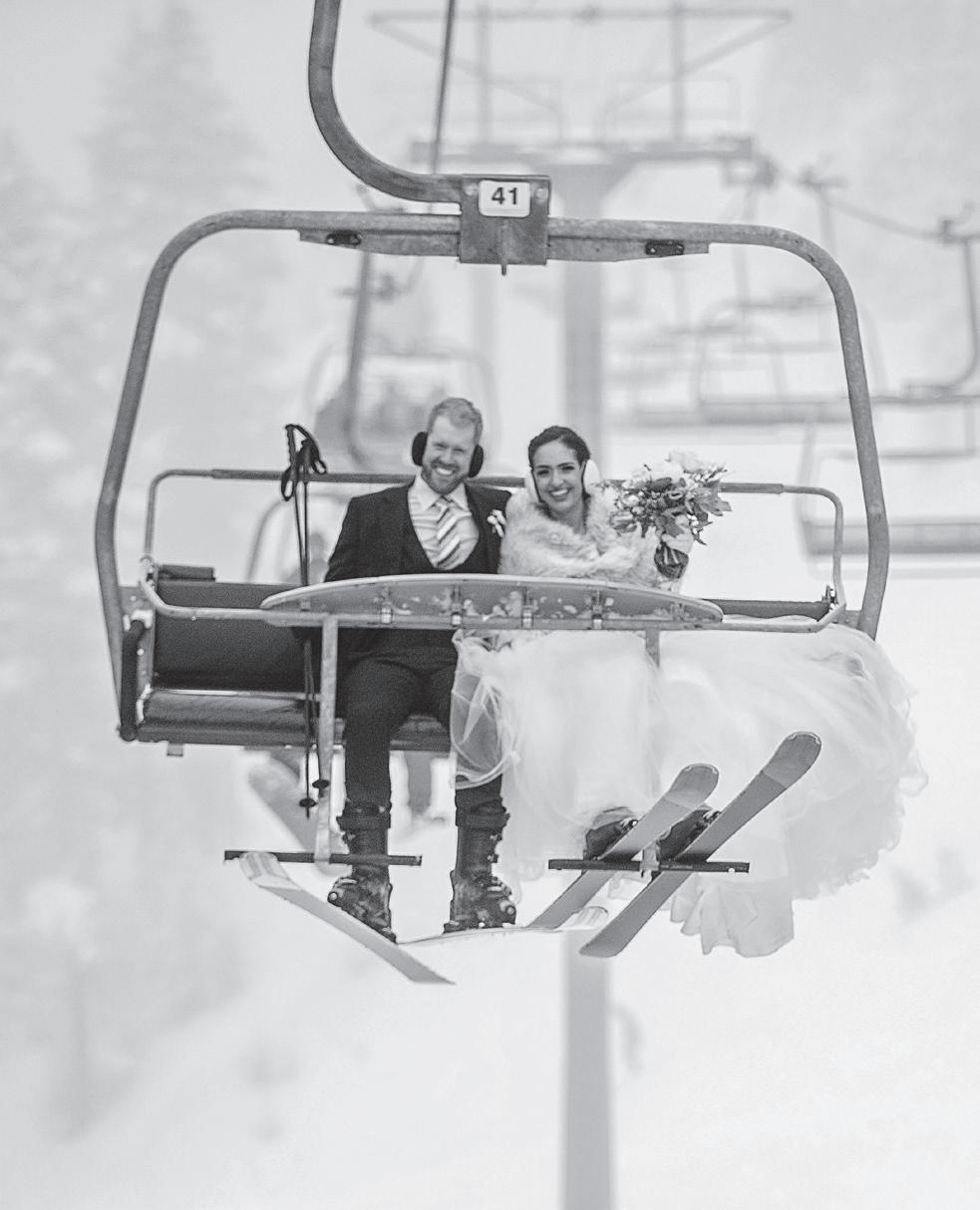
For more information, please contact Recreation Officer Alistair McCrone at Alistair.McCrone@gov.bc.ca, use the subject line “Hawint – Tenquille Lake Site Operator Bid”. Quotes must be submitted by May 5th 23:59 hrs.
We are currently recruiting professionally minded people to join our team:

Equipment Operators
Pipe Layers
Construction Labourers
*Competitive wages, extended health benefits (after 3 months)
Email resume to: info@whistlerexcavations.com



Looking to contribute to your local community? Consider a career in local government. Join the SLRD’s team of dedicated staff who work together to make a difference in the region.
Headquartered in Pemberton, the Squamish-Lillooet Regional District (SLRD) delivers a wide range of regional, sub-regional and local services to its residents. The SLRD is a BC Regional District consisting of four member municipalities (Squamish, Whistler, Pemberton, Lillooet) and four electoral areas. Services include land use planning, solid waste management, building inspection, fire protection, emergency preparedness, 911 services, recreation, water and sewer utilities, regional transit, trails and open spaces as well as financial support for various community services. The region contains some of the most spectacular forests, waterways, and mountains in the province and affords an endless range of opportunities for outdoor adventure, making it an exceptional place to live, work and play.


The SLRD is are looking for an energetic, results-oriented individual with great customer service and interpersonal skills and a can-do attitude to join the busy Building Department to assist with plan checking and building inspections. The role of the Building Official is split between the Regional District office and the field. The Building Official travels throughout the Electoral Areas of the Regional District conducting field work which includes inspecting construction to ensure that design, material, and safety features meet or exceed standards and conform to accepted plan specifications established by the BC Building Code and SLRD bylaws and regulations.

The ideal candidate is an upbeat team player with great attention to detail who possesses qualification from the Building Officials Association of BC (minimum Level 1), and a post-secondary diploma in Building Technology with related field experience. For further information, please refer to the full job description at www.slrd.bc.ca/employment
Salary will be determined commensurate with experience. This position also offers a comprehensive benefits package, participation in the Municipal Pension Plan, a compressed work week (9-day fortnight), and hybrid remote work opportunities.
Interested candidates are invited to submit their cover letter and resume (preferably in pdf format) by email to careers@slrd.bc.ca. This posting will remain open until filled; Interested candidates are encouraged to submit their application on or before April 23, 2023.
We sincerely thank all applicants for their interest, however, only those shortlisted will be contacted.
Corona Excavations Ltd is a civil based construction company with a professional and enjoyable working environment working in the sea to sky corridor from Pemberton to Squamish.
We are looking for an experienced dump truck driver to join our crew. We are offering full time hours from April 1st with competitive wages and benefits. You would be driving a 2018 Mack Tandem dump truck servicing our job sites in Whistler and Pemberton.
If you are interested or have any questions please call 604-966-4856 or email me with your CV at Dale@coronaexcavations.com
Corona Excavations Ltd is a civil based construction company with a professional and enjoyable working environment working in the sea to sky corridor from Pemberton to Squamish.

We are looking for a person to drive around small tools/ equipment and parts to sites as well as help maintain our yard. Any mechanical or equipment experience would be beneficial in the growth of the role. We will provide a work vehicle and the potential for development within the company.
If you are interested or have any questions please call 604-966-4856 or email me with your CV at Dale@coronaexcavations.com.
Corona Excavations Ltd is a civil based construction company with a professional and enjoyable working environment working in the sea to sky corridor from Pemberton to Squamish. We are looking for ground staff to work for the upcoming construction season. Experience with operating, pipelaying and landscaping are beneficial. We are offering full-time hours with wages and benefits dependant on experience.
If you are interested or have any questions please call 604-966-4856 or email me with your CV at Dale@coronaexcavations.com.
Looking to contribute to your local community?


Consider a career in local government. Join the SLRD’s team of dedicated staff who work together to make a difference in the region.
Headquartered in Pemberton, the Squamish-Lillooet Regional District (SLRD) delivers a wide range of regional, sub- regional and local services to its residents. The SLRD is a BC Regional District consisting of four member municipalities (Squamish, Whistler, Pemberton, Lillooet) and four electoral areas. Services include land use planning, solid waste management, building inspection, fire protection, emergency preparedness, 911 services, recreation, water and sewer utilities, regional transit, trails and open spaces as well as financial support for various community services. The region contains some of the most spectacular forests, waterways, and mountains in the province and affords an endless range of opportunities for outdoor adventure, making it an exceptional place to live, work and play.

The SLRD is currently accepting applications for the following positions:
• Legislative Coordinator (Regular, Full-time)

• Project and Program Coordinator (Regular, Full-time)
• IT Manager (Regular, Full-time)
• Building Official (Regular, Full-time)

The SLRD offers a competitive compensation and benefits package, participation in the Municipal Pension Plan, a compressed work week (nine-day fortnight), hybrid remote work opportunities, and learning and career development opportunities. For more information on these career opportunities, please visit www.slrd.bc.ca/ employment. To apply, please submit a cover letter and resume (preferably in pdf format) by email to careers@slrd.bc.ca
We sincerely thank all applicants for their interest, however, only those shortlisted will be contacted.
piquenewsmagazine.com/ local-events/
•
•






























·
·


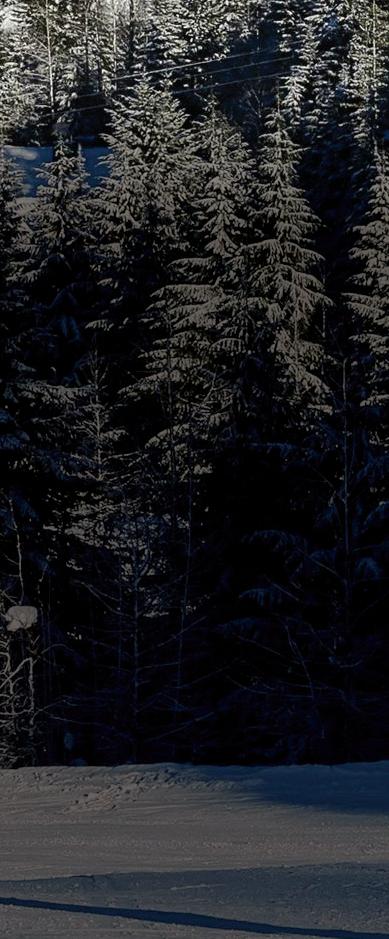


• Lifeguard/Swim Instructor (casual)


•

General Manager of Community Services – Regular Full-Time
Community Patrol Officer (Multiple Positions) – Casual/On-Call
Lifeguard 1 – Regular Part-Time (20-30 hours)
Lifeguard 1 – Regular Part-Time (4-19 hours)
Utility Operator 2 - Wastewater Collections - Casual/ On-Call

Finance Coordinator - Regular Part-Time
Assistant Recreation Facility Maintenance Supervisor - Regular Full-Time
Occupational Health & Safety (OHS) Advisor - Regular Full-Time
Economic Development Coordinator – Casual/On-Call
Front Counter Clerk – Regular Full-Time
Labourer 2 – Regular Full-Time
Utility Operator 1 – Water Distribution – Regular Full-Time
Recreation Program Instructor 1 – Biking – Temporary Part-Time (4-19 hours) (2 Positions)
Recreation Program Instructor 1 – Biking – Casual/On-Call (Multiple Positions)
Building Official – Casual/On-Call
Labourer 2 (Multiple Positions) – Temporary Full-Time
Small Equipment Operator and Winter Truck Driver 3 – Regular Full-Time
General Manager of Community Planning and Sustainability – Regular Full-Time
Financial Services Specialist – Temporary Full-Time
FRONT
(18-months Maternity Coverage)
POSITION: CHIEF OPERATING OFFICER

LOCATION: WHISTLER, BC
The Whistler 2020 Development Corporation (WDC) is a wholly owned subsidiary of the Resort Municipality of Whistler (RMOW) incorporated as a business under the BC Business Corporation Act. The RMOW created the WDC to initially facilitate the delivery of the Whistler Athlete Village for the 2010 Olympic and Paralympic Winter Games (and subseqent conversion to resident restricted housing) on a portion of the Community Land Bank lands and now, to assist with the ongoing development of resident restricted housing on remaining Community Land Bank lands.

WDC is seeking an executive leader with a minumum of 5 years executive leadership experience in real estate development and project manegment. The successful candidate will have a post secondary degree in engineering, planning, archictecture, business or finance. A proven track record in developing significant projects in the local area is desireable. This position is responsible for managing the affairs of WDC in accordance with strategy and policies approved by the Board. The COO in accordance with WDC Strategic Business and Financial Plans maintains overall rsponsibility for effective coordination, direction and control of all financial and general administrative affairs and operations of WDC.
To explore this position further please submit your cover letter, resume and contact details by Friday April 21, 2023 at 5:00 pm PST to contactultimatehr@gmail.com
We are currently hiring the following positions for projects in WHISTLER.
We are currently hiring the following positions for projects in WHISTLER.

Journeymen Carpenters (5+ years)
Journeymen Carpenters (5+ years)
Skilled Labourers
Skilled Labourers
We offer competitive pay, a benefits package, company cell phone plan, interesting projects, a collaborative team environment, and a chance to improve your existing skills.
We offer competitive pay, a benefits package, company cell phone plan, interesting projects, a collaborative team environment, and a chance to improve your existing skills. We are looking for dedicated team players who want to join a rapidly growing company and establish a long-term career in construction.

We are looking for dedicated team players who want to join a rapidly growing company and establish a long-term career in construction.
Please forward your resume to Lea@gccltd.ca
Please forward your resume to Lea@gccltd.ca
JOB POSTINGS
NCFDC is seeking On-Call: Infant Toddler, Special Needs, Early Childhood Educator, and ECE-Assistant Licensed individuals, we invite you to submit your application. The Early Childhood Educators work as team members with other child care setting staff and with all the children and families providing general support to the whole program to ensure effective inclusion of the children.
The successful candidate will have demonstrated ability in:
• Ability to develop and maintain a warm, caring, responsive relationship with the child.
• Ability to establish and maintain supportive, collaborative relationships with families and staff.
• Ability to maintain confidentiality, positive, professional, nonjudgmental attitude
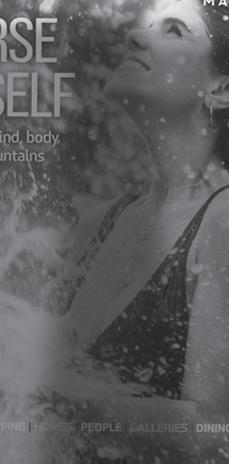
• Physically ability to carry out the duties of the position.
• Planning and implementing developmentally appropriate curriculum that supports community, inclusion and is culturally significant for young Aboriginal children.
• Understanding and working knowledge of Child Care Licensing regulations.
• Interpersonal, written, oral communication skills and maintaining positive communication with parents.
• Collaborating with community service providers, Self-directed and able to initiate and complete projects.


In addition, the Early Childhood Educators will have:
• A minimum of 2 years work experience in a child care setting.
• Valid Early Childhood Educator Certificate, ECE Licence to Practice or going to school to take Early Childhood Educator courses.
• Clear Criminal Records Check & Current First Aid.
• Food Safe or willingness to obtain.
• Some knowledge of curriculum and philosophies in First Nations Early Childhood settings.

Terms of Employment:
• Monday to Thursday - 8:30am - 4:30pm.
• Start Date: As soon as possible.


• Wage: (negotiable depending on experience).
Cover Letter & Resume to:
Title: Anita Patrick, Director
Agency: N’Quatqua Child and Family Development Centre

Email: anita.patrick@nquatqua.ca
Phone Number: 604-452-3584
Fax: 604-452-3280
Deadline: until position is filled
We thank all those who apply. Only those candidates selected for interview will be contacted.
WE
Life & Leisure Program
Extended Health Benefits
Retirement Savings Program
Free Staff Parking
Free Staff Meals
Education Reimbursement

50% Discount in our Food & Beverage outlets
Go Hilton Team Member

APPLY
TODAY THROUGH OUR QR CODE!

CULINARY Sous Chef
Chef de Partie Cooks

Dishwasher
Restaurant Host
HOUSEKEEPING
Room Attendant
www.whistlerwag.com












CAREER OPPORTUNITIES
Love a good challenge? Passionate about the place you call home? Tourism Whistler is looking for community-loving, mountainappreciating, environment-respecting people to join our team. Come collaborate with us. We’re hiring for the following opportunities:
• Summer Visitor Surveyors (Part Time, Summer Contract)





• Coordinator, Assessments (Part Time, Year Round)
• Specialist, Member Relations (Full Time, 18 Month Contract)


• Accountant, Whistler.com (Full Time, Year Round)



• Maintenance Technician/Cleaner (Full Time, Year Round)

• Visitor Centre Agent (Full Time, Summer Contract)
• Coordinator, Ask Whistler (Full Time, Year Round)
What we offer: a flexible schedule offering work-life balance, a commitment to health and wellness, excellent compensation and benefits package, and a great team environment.
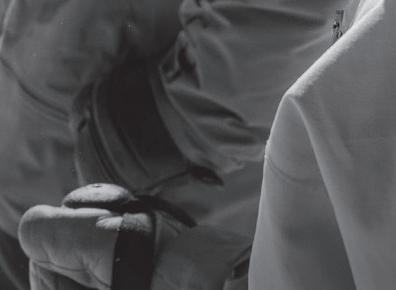


TO VIEW OUR CAREER OPPORTUNITIES, AND TO APPLY, VISIT US ONLINE AT WHISTLER.COM/CAREERS.

TO THE MANAGER, SALES & MARKETING
Full Time, Year Round
Love a good challenge? Passionate about working and playing (golf) in the best place on earth? The Sales & Marketing Manager at the Whistler Golf Club is responsible for attaining revenue targets for all aspects of the golf operation (with a focus on pre-sold group events), and for the effective marketing, reporting and communications required to continue to support and build the business. This position requires an experienced and personable sales approach and a commitment to customer service, with an understanding of marketing strategies to foster a strong brand, and continued revenue growth for the Whistler Golf Club.


What we offer: a fun team and work environment, competitive compensation and benefits package, and free golf at our legendary course!
TO
Part Time, Year Round
The Assessments department manages the administration of Member records and collection of Tourism Whistler Assessments fees. The Coordinator is responsible for Member data maintenance in relation







Position is full time, year-round. Starting salary is $52,000 + tips, staff meals, and other perks.
Extended Medical and Dental, ski pass, golf pass, and staff discounts at Roland’s Pub & Red Door Bistro. Must have line cooking experience, food safety certification, and some management experience is beneficial. Duties will include cooking on the hotline, assisting with ordering & receiving of food products, creating specials and new menu items, organizing freezers & fridges, and ensuring kitchen staff are properly stocked and prepared for busy lunch & dinner rushes. Temporary staff housing is available.
Please email resume to info@rolandswhistler.com or apply in person at 2129 Lake Placid Road in Whistler’s Creekside.





















THERE’S NOTHING like a good walk to clear your head and put your life into perspective.
In February 1984, near the end of his fourth term as prime minister, Pierre Trudeau said it was during a snowy walk in Ottawa he decided not to run for re-election.
Twenty-three years earlier, having walked to the top of London Mountain in 1961, looking out over the relatively undeveloped valley below, with its chain of glistening lakes, Garry Watson knew he was looking at the place he wanted to live.
BY G.D. MAXWELLIt was a bold decision, given there was nothing within his range of view to offer a career path forward for a 28-year-old lawyer. But it was a fortunate one for what would become Whistler, the resort, the town, the outstanding Canadian success story he would leave an indelible impression on and help guide through its creation and growth.
Only a year earlier, a group of Vancouver businessmen, inspired by their experience attending the 1960 Winter Olympics in Squaw Valley, Calif., coalesced around the idea of creating a first-class ski mountain close to Vancouver and pursuing their dream to host an Olympics. Having abandoned their first idea—Diamond Head on Mount Garibaldi—as incompatible with their plans, they spotted London Mountain, and after some analysis of the topography, decided it was an outstanding site.
But when Garry stood atop the mountain, it was all just a pipe dream. There was no ski hill, not much of a road linking the town of Alta Lake with Vancouver, only a dream and a man enthralled at what he saw below him.
As strange as it sounds in 2023, Garry was a pioneer, a founding father, a guiding hand in the creation, growth, and maturation of Whistler. Stranger still was the opportunity many of us had to know him, admire him, and hear his many stories of how this unique place came about... and how it almost didn’t. There is unlikely to be more chances in the future for others to befriend people who helped create the place we end up calling home.
Garry passed away last week, a few months shy of his 90th birthday, and with projects he was still pursuing to make this town a better place to call home.
His first project was as member of the Garibaldi Olympic Development Association (GODA), the group those visionary businesspeople put together to float the nonexistent ski mountain as a potential site for the 1968 Olympics. Garry was chair of its first Community Planning Committee. The effort came to naught, but it sent tendrils into the provincial government and laid the groundwork for what was to come.

GODA spawned Garibaldi Lifts Limited to assess the feasibility of developing London
Mountain into a ski area. That effort was more successful.
Initially part of the Squamish-Lillooet Regional District, the nascent resort was saved from unbridled development when the provincial government instituted a development freeze in 1974 and created the Resort Municipality of Whistler Act in 1975. As part of that act, it established a local
siting the town centre on Crown land, thereby avoiding having to purchase costly private land and controlling all the land essential to the development of the town centre, local landowners disagreed.
An ad hoc group of property owners banded together to present a competing vision, with the town centre located north of today’s village—on property owned by
to make charges of conflict of interest and/ or corruption stick. Neither did, although the RCMP officer investigating the latter, including tapping the phones of members of council, reported he had, “investigated many municipalities and never found one quite as lily-white as Whistler.”
From the first OCP, to the development of Whistler’s sewer system, to the planned design of the village, to the so-called provincial bailout when interest rates threatened to bankrupt the partially built village, to issues he was working on until he took his last breath last week, Garry was right in the middle of virtually every decision that made Whistler what it is today.
government, appointed one of the aldermen —Al Raine —tasked the new body to create the first Official Community Plan (OCP), and imposed taxes on property owners to finance a community sewer system.
Garry was instrumental in all that. Serving on the first municipal council, along with John Hetherington, Raine, Bob Bishop and Mayor Pat Carleton, the “real work” began.
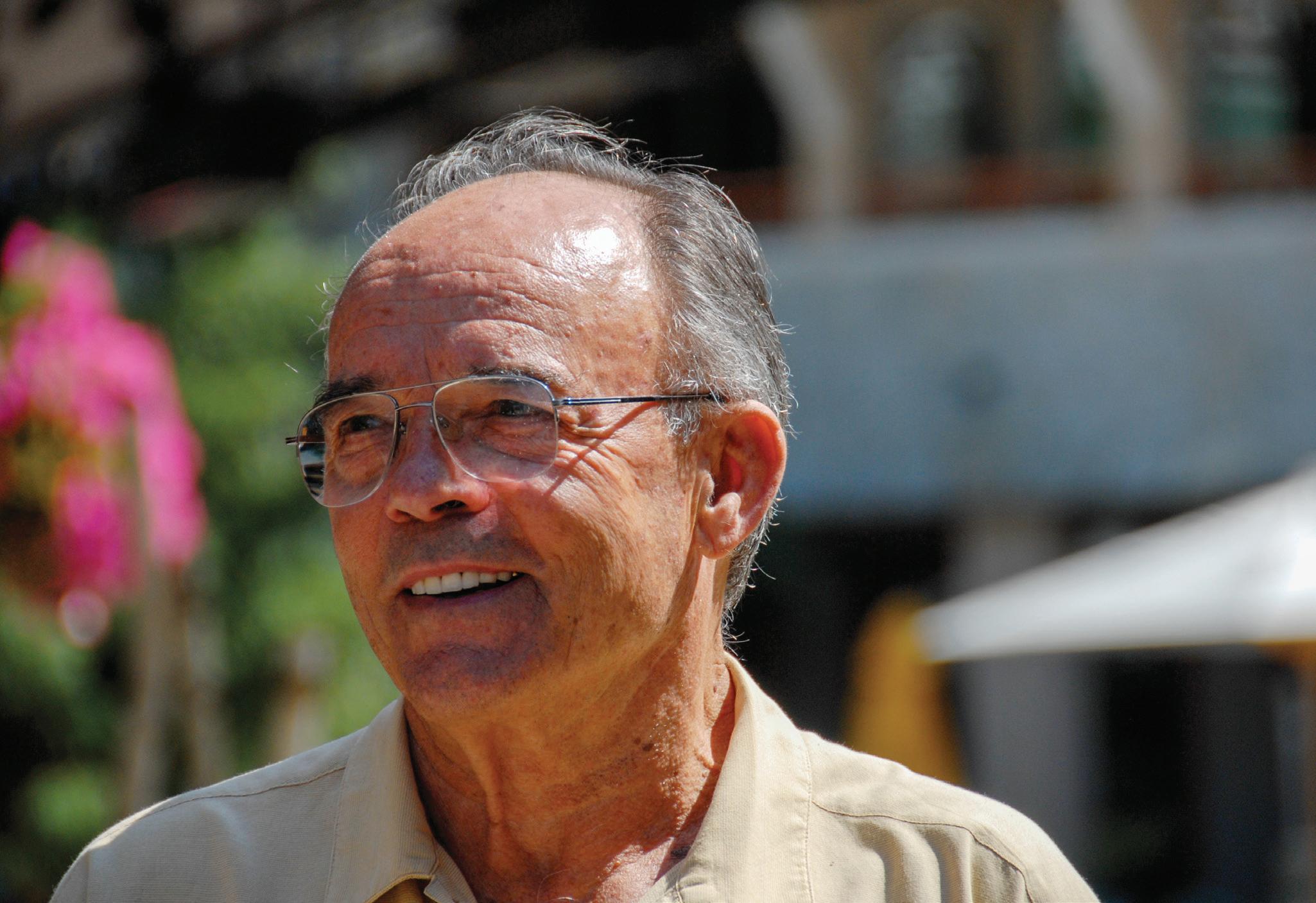
A key element of that work was the establishment of a single town centre, something to give a focus to the community. It was believed the best location was Crown land at the base of both Whistler and Blackcomb mountains. Blackcomb was years away from being developed and the only development on Whistler was down to the base at Creekside.
While the council saw the benefit of
them—and made a forceful presentation to the province.
Garry tells the story of the mayor, Raine, and himself travelling to Victoria to meet with Hugh Curtis, Minister of Municipal Affairs, following the property owners’ group, with the resignations of the entire council in the mayor’s pocket, to be tendered if the minister didn’t agree with their plan to build Whistler Village at the base of the mountains.
They were relieved of that onerous task when the minister, referring to the competing proposal, described it by saying, “You know, I never saw such a display of ‘bullshit baffles brains’ in my life.”
The disappointed property owners, failing to believe anyone could be inspired by anything other than self-interest, tried
Since 1964 when he built his first cabin, Garry called Whistler home. His efforts garnered him most of the recognition anyone can receive from their hometown. He received a lifetime ski pass in 1975. He was, by Mayor Jack Cromtpon’’s reckoning, the second person to be awarded the Freedom of the Municipality when he was granted that honour in 1980. In 2005, he was named Citizen of the Year. He was recognized with a Community Achievement Award from the province’s Lieutenant Governor in 2008.
And on a sunny day two weeks ago, sharing lunch on the patio at Dusty’s, the last time I saw him, he told me about his greatest reward. “It was 38 years ago, after a day of skiing, I first kissed my wife, Anne Popma, on Dusty’s patio.”
Whistler will miss you, Garry. It wouldn’t be the same place without your hard work and dedication all these years. ■
Garry was right in the middle of virtually every decision that made Whistler what it is today.
2928 Big Timber Court: One of the last large Lots over 27,000 sq. / 2,500 sq.m. in this exclusive neighbourhood. The community offers Whistler mountain ski in / ski out trails and nearby access to the private gondola. Build your dream home! $4,490,000 GST Exempt.
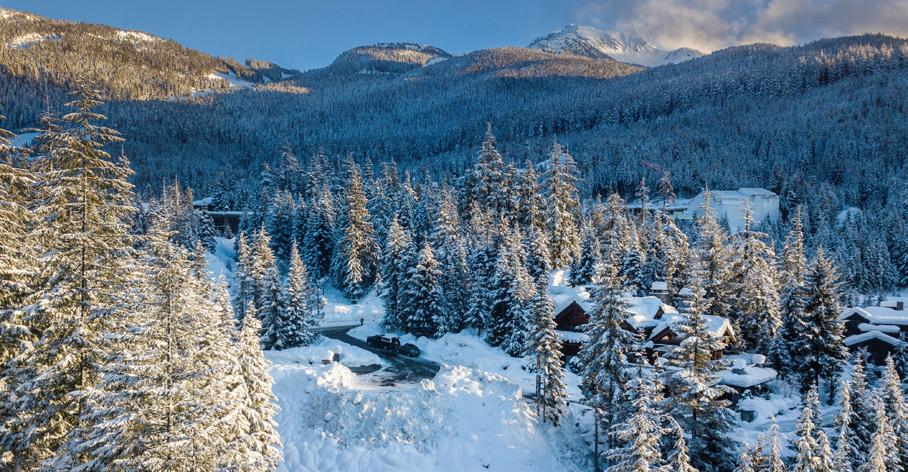

Kathy White PREC*
604-616-6933
9488 Emerald Drive: Build something special on this 11,725 SF lot with classic Emerald views of Wedge and Armchair. A relaxation of the roadside setback approved, over $200k in site and services prep, let your imagination go with what could be. $1,595,000
Rob Boyd - Boyd Team
604-935-9172
702 & 704 - 4050 Whistler Way: Hilton Owners enjoy unlimited stays and a central village location offering all the amenities of a resort hotel. This lock-off 2 bed, 2 bathroom, with storage may also be rented nightly though the Hilton full-service, rental management program. $949,000



Nick Swinburne PREC*
604-932-8899
4 - 2400 Cavendish Way: WHISKI JACK Complex, near Creekside Gondola for skiing and summer mtn biking access. Cozy 2 bed, 2 bath townhouse just under 800 sq.ft. Enjoy this as your home or rental investment property. $950,000
Carmym Marcano
604-719-7646
3 - 4894 Painted Cliff Road: Mountain Star 3 is your private and peaceful slopeside retreat on Blackcomb. Ski access, a private hot tub, a ski locker and secure underground parking offer ultimate Whistler conveniences plus strong revenue opportunities. $2,499,000
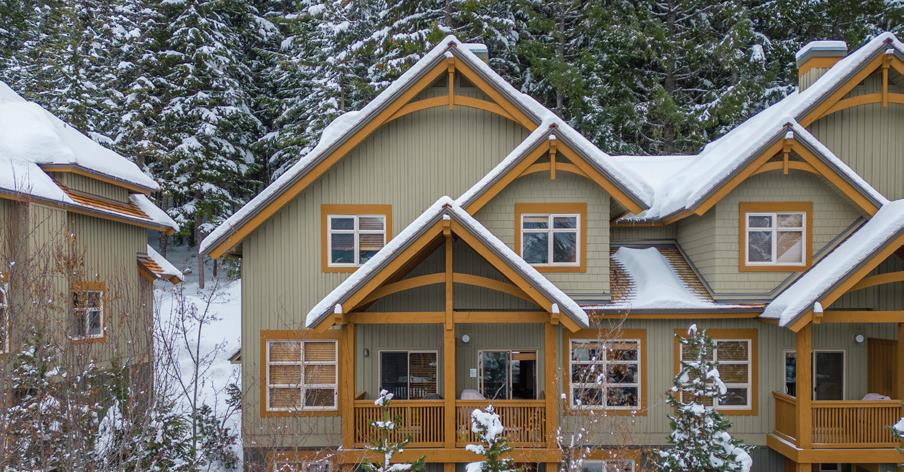
Katherine Currall
604-966-1364
401(G2) - 4653 Blackcomb Way: Beautiful top floor/corner unit with spacious 2 bed, 2 bath layout. Features; heated outdoor pool, hot tub, games room, gym, ski-in access, free area shuttle & much more. Enjoy one week each month!
$385,000
Kerry Batt PREC*
604-902-5422
Paradise Valley, Squamish: Escape to your 9-acre waterfront estate. Living down valley offers the outstanding lot size & the absolute privacy that doesn’t exist in Whistler. 38 minutes to the lifts. Live in the carriage home, build a 5400 sq ft dream home. $3,185,000

Ken Achenbach
604-966-7640
40846 The Crescent, Squamish: West facing home that captures stunning mountain and valley views. Modern and sleek design throughout, the primary bedroom is equipped with its own balcony and jaw-dropping ensuite bathroom. Close to epic mountain trails and more. $1,850,000

Valerie Phillipson
604-698-5899
40891 The Crescent, Squamish: Spacious layout and highend finishes, this home has everything you need to live in comfort and style. Spa-like ensuite, and covered balcony with stunning mountain views. Includes large hot-tub and great privacy. $2,695,000

Angie Vazquez PREC*
778-318-5900









